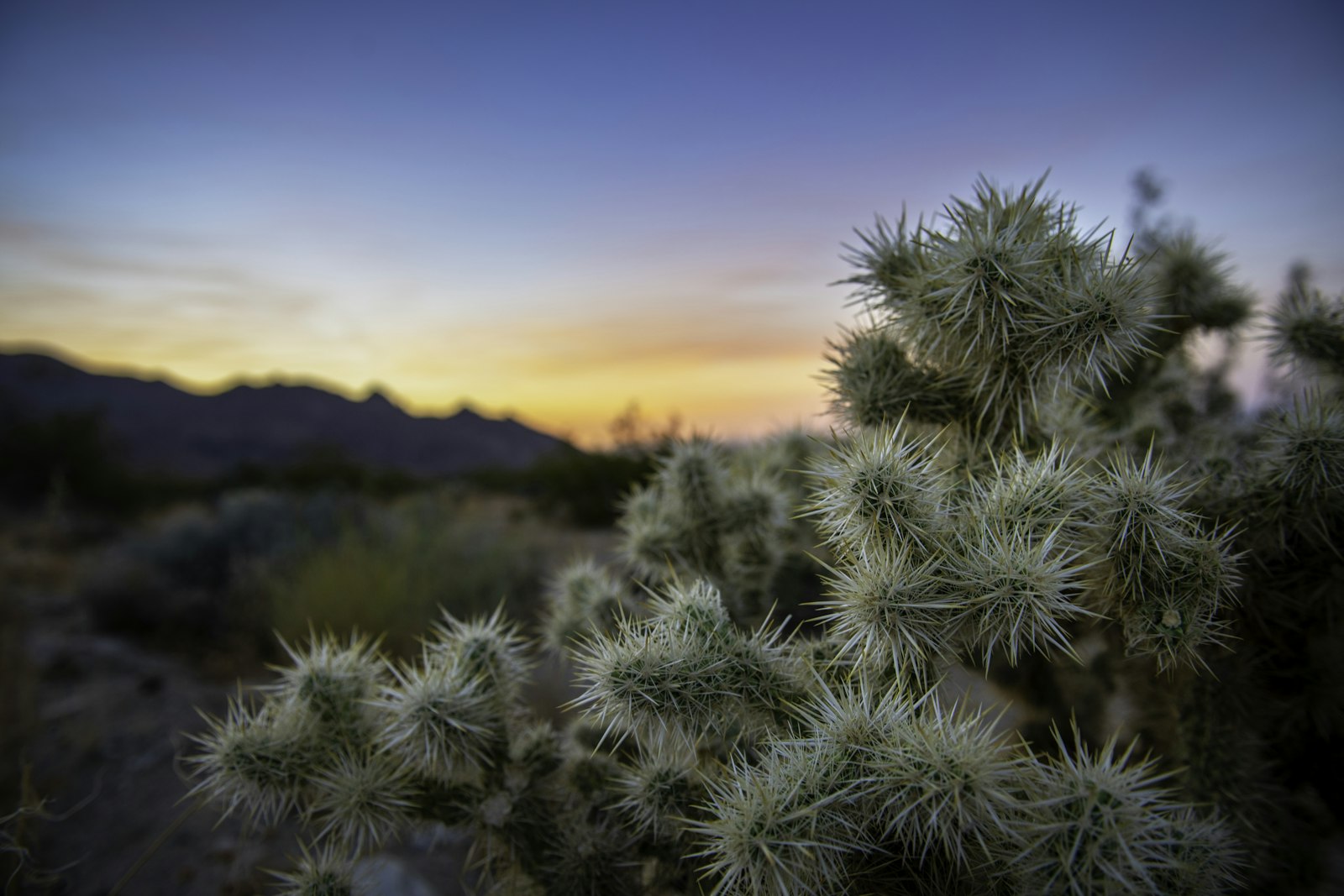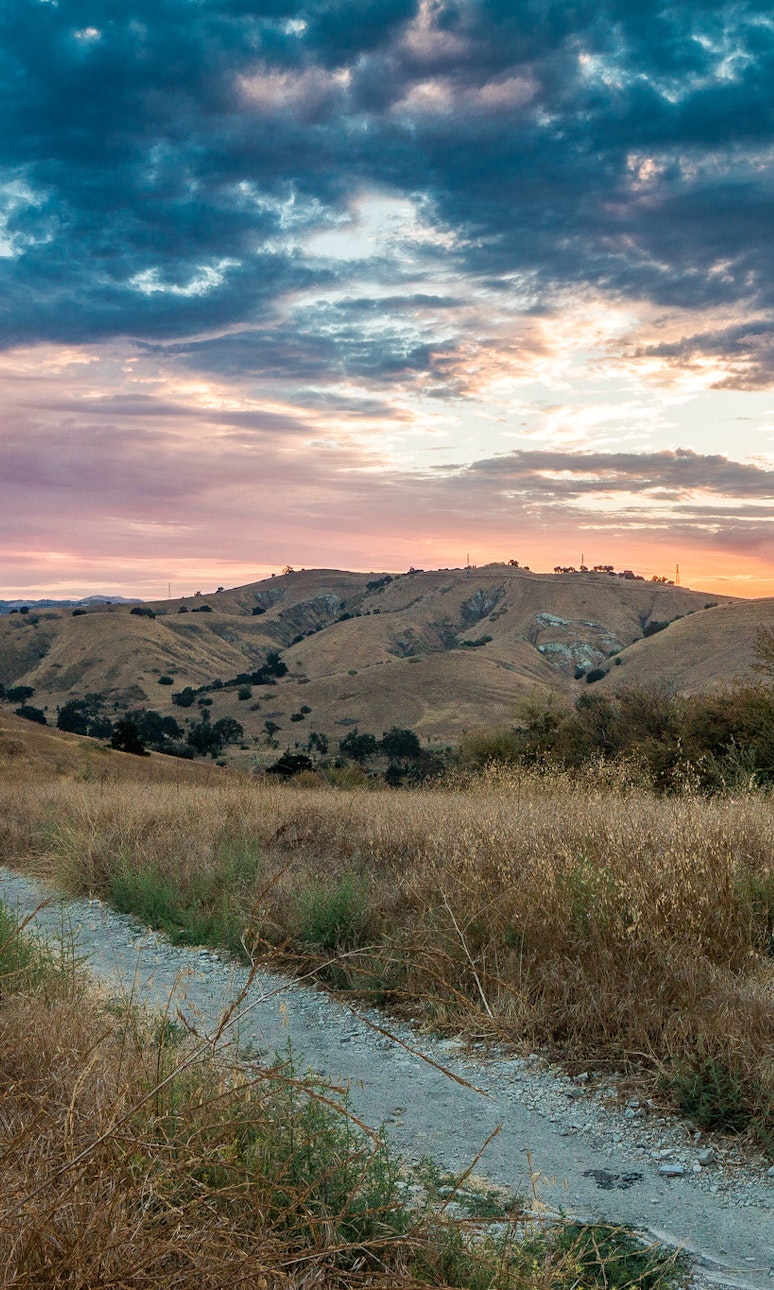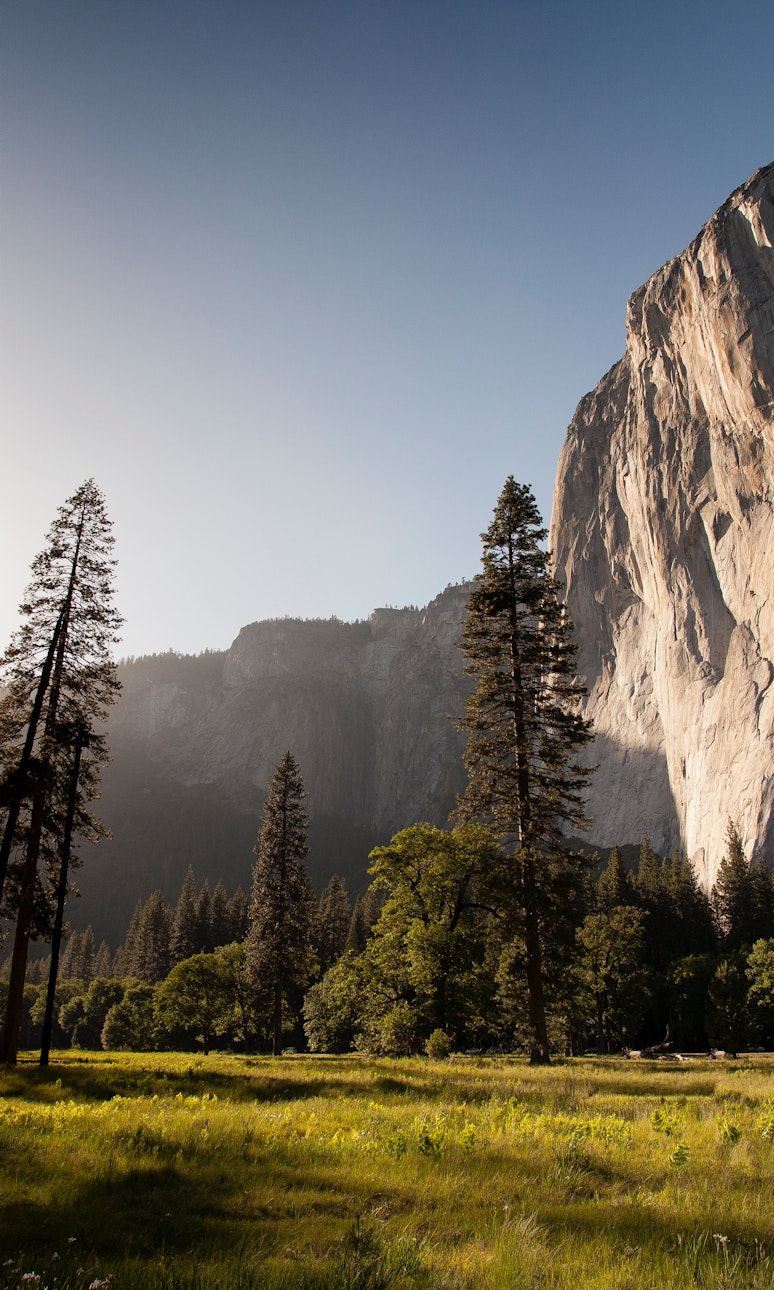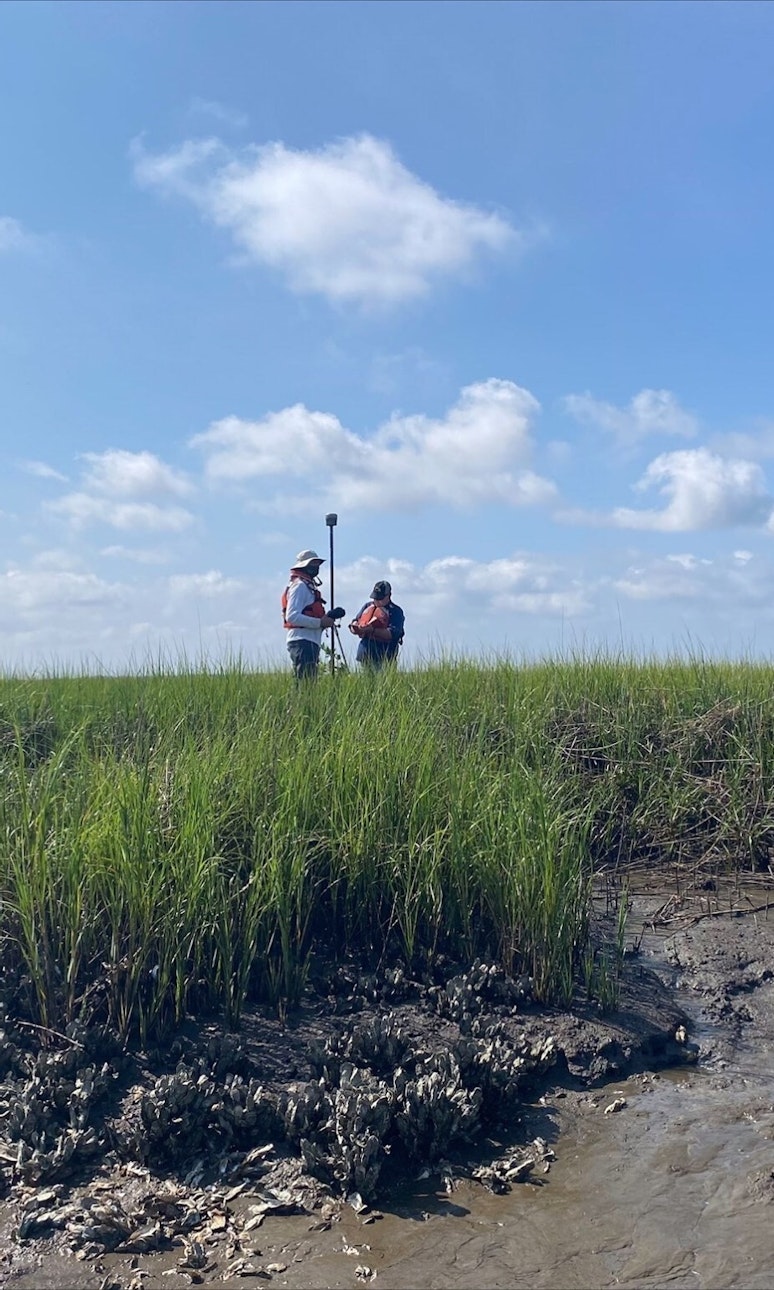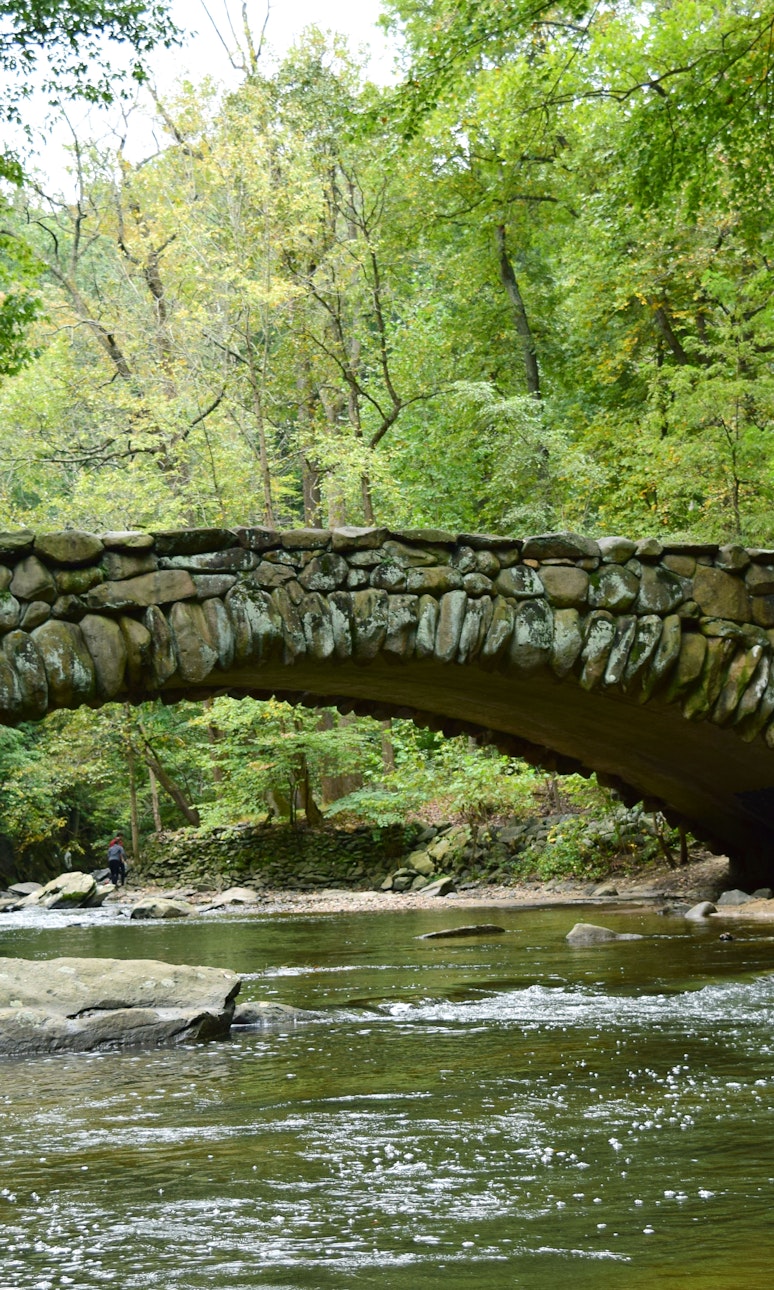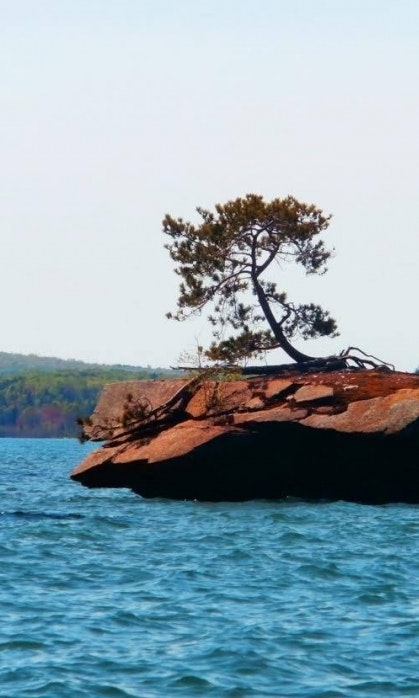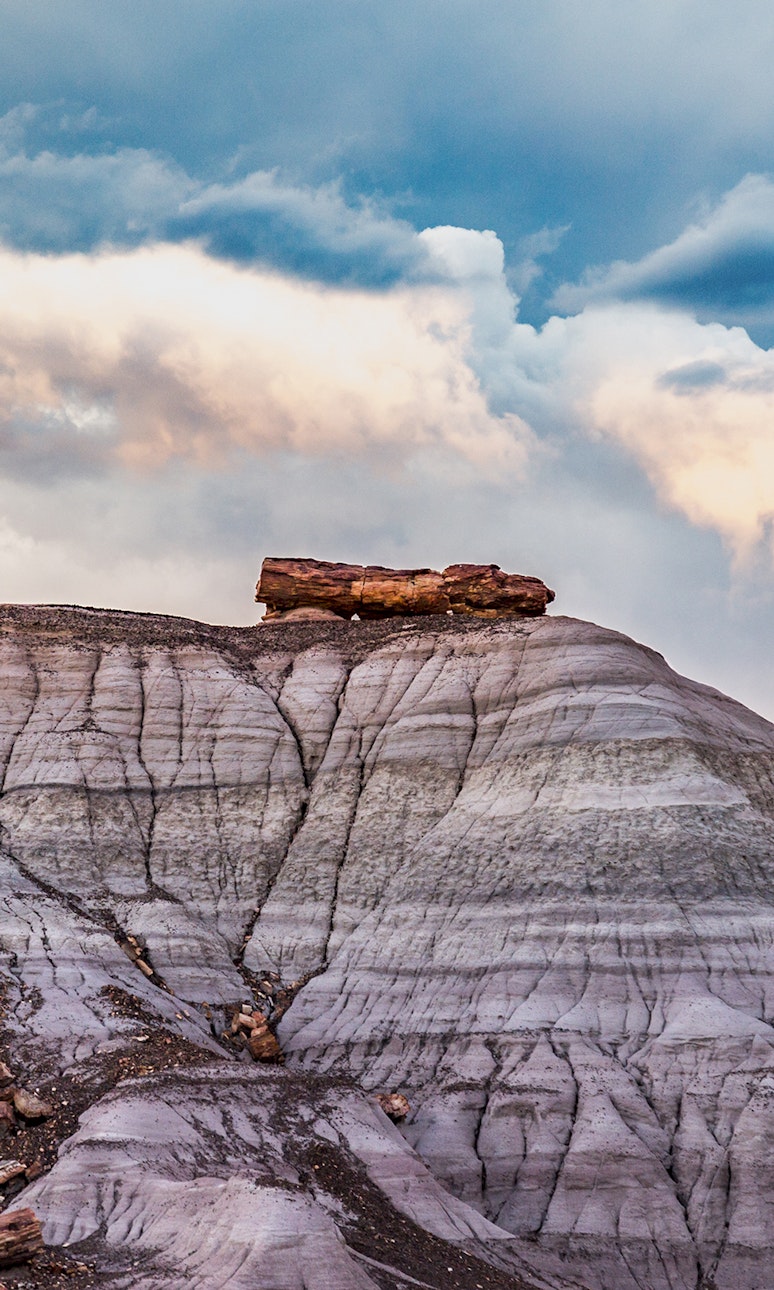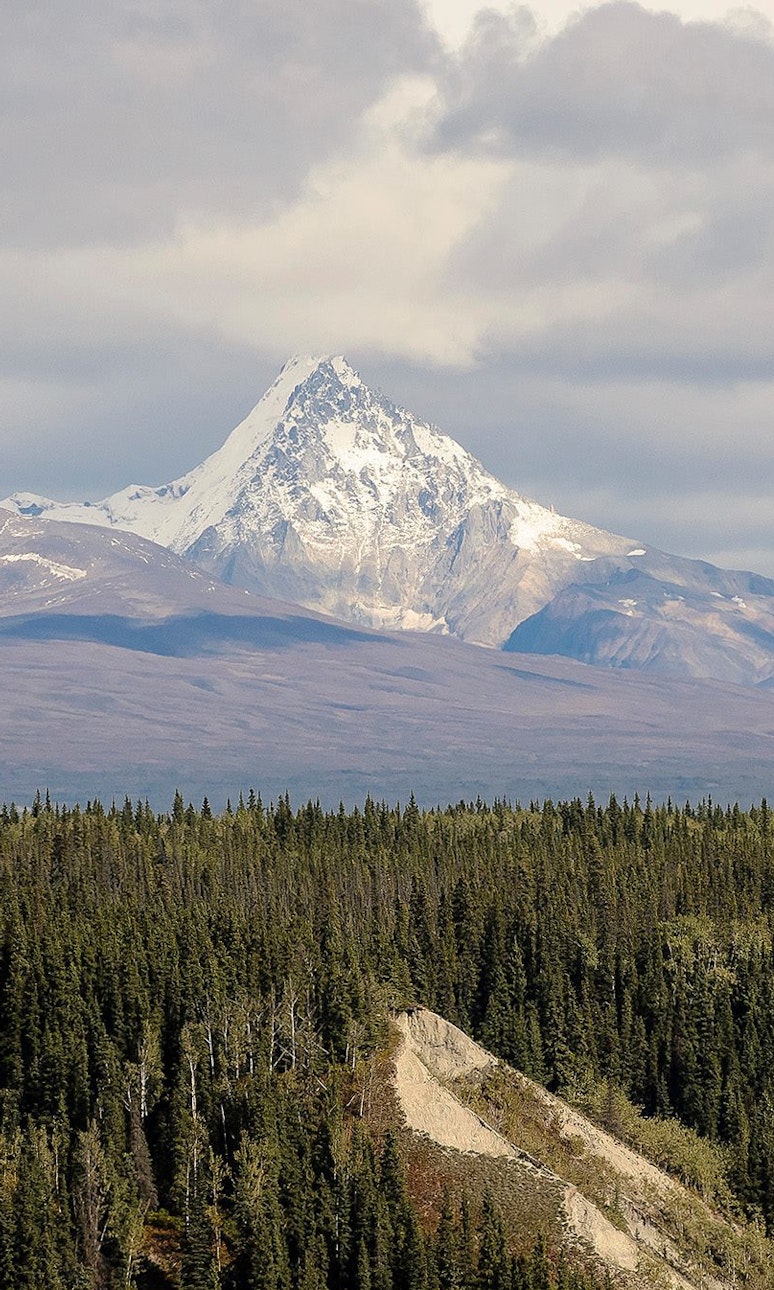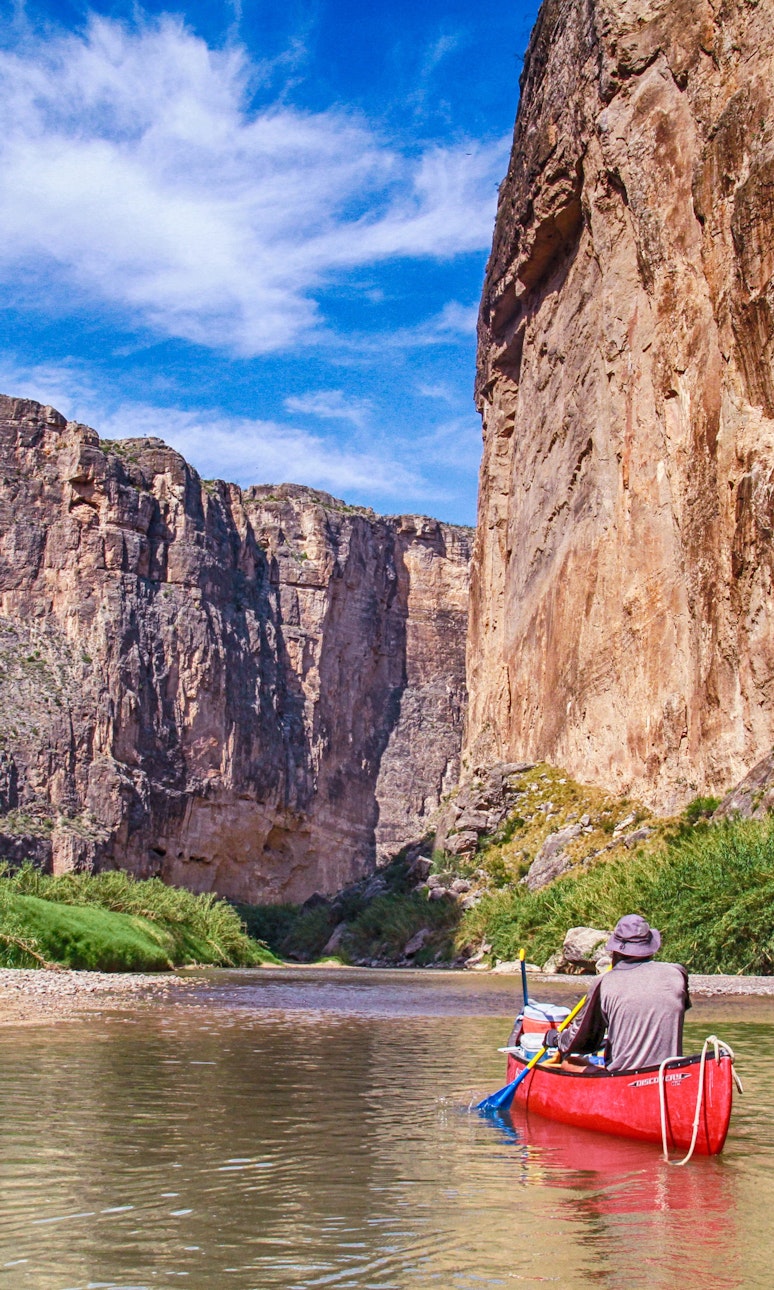
Climate Change
-
Understanding the ScienceThe effects of climate change are varied and complex. NPF supports projects that seek to provide scientific understanding of climate change’s many implications in parks.
-
A Multi-Faceted ResponseFrom rising sea levels to threats to keystone species, responding to climate change requires the use of innovative and data-driven techniques and efforts.
-
Partnership in ActionNPF leverages strategic partnerships with parks, local communities, organizations, and corporations to help enhance efforts to combat climate change.
Rising to the Challenges of Climate Change
As human activity drives changes to our modern climate, we must address the challenges climate change brings to our parks. From the melting of glaciers in Kenai Fjords National Park to the sea level rise near the Statue of Liberty National Monument, these effects are already threatening our parks and immediate investment is needed to mitigate impacts, boost resiliency, and preserve parks – from sea to shining sea.
Working in partnership with the National Park Service (NPS), the National Park Foundation (NPF) supports programs and projects that help us understand the effects of climate change on our parks and work to mitigate these effects so we can continue to preserve these special places. Together, with partners, we are helping restore habitats to ensure ecosystem resiliency, implementing alternative energy solutions to reduce parks’ carbon footprints, installing recycling facilities to cut down on the waste sent to landfills, empowering parks and visitors everywhere to learn and act against these challenges, and so much more.
NPF's Work in This Space
NPF supports programs and projects that seek a scientific understanding of climate change's many impacts in parks, as well as those that combat these impacts.
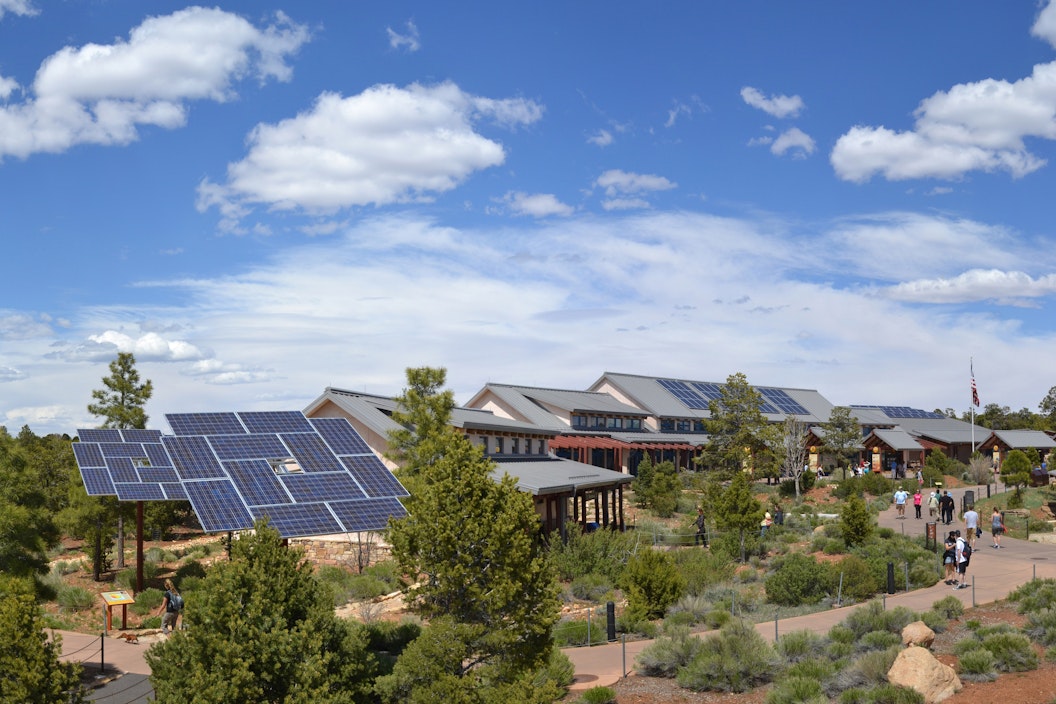
-
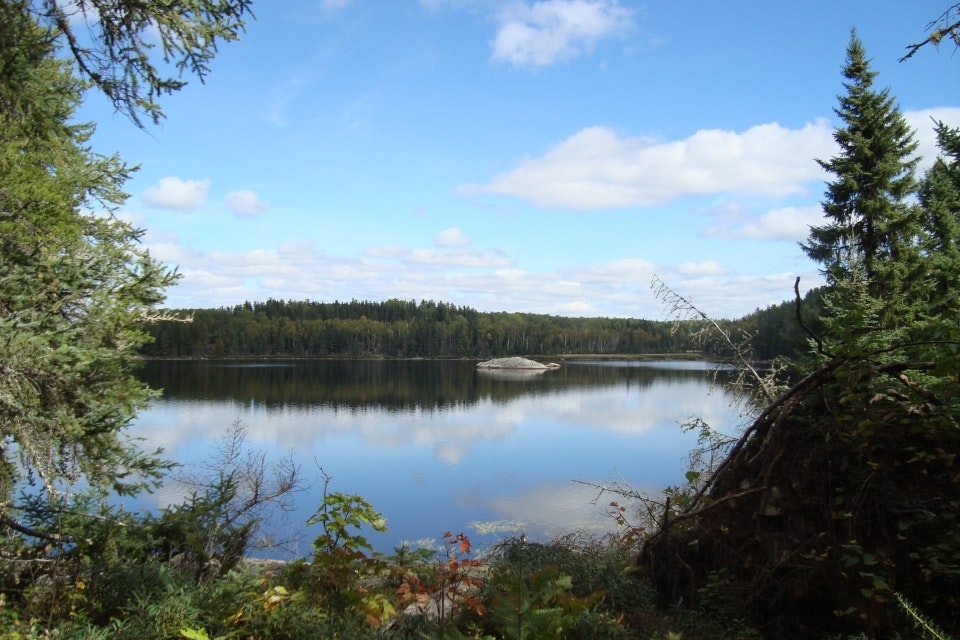 ProgramConserving WaterFresh water is a vital limited resource that preserves park ecosystems. NPF’s Conserving Water program supports projects that reduce potable water use in parks, including retrofitting faucets and toilets, installing rainwater catchment systems, and more.
ProgramConserving WaterFresh water is a vital limited resource that preserves park ecosystems. NPF’s Conserving Water program supports projects that reduce potable water use in parks, including retrofitting faucets and toilets, installing rainwater catchment systems, and more. -
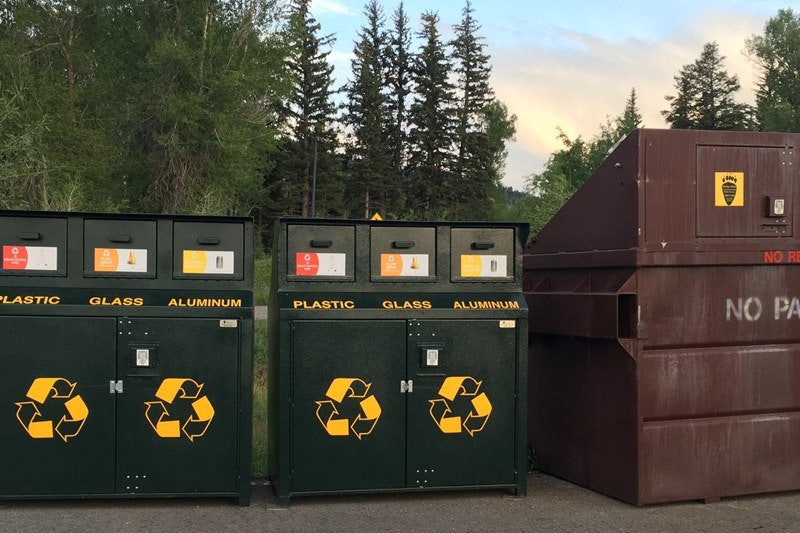 ProgramReducing Waste Sent to LandfillsNPF works closely with NPS to fund critical waste diversion projects that help support NPS’ goal of diverting 75% of waste from landfills annually. Projects include infrastructure support, employee and visitor education, and enhancement of recycling and composting initiatives.
ProgramReducing Waste Sent to LandfillsNPF works closely with NPS to fund critical waste diversion projects that help support NPS’ goal of diverting 75% of waste from landfills annually. Projects include infrastructure support, employee and visitor education, and enhancement of recycling and composting initiatives. -
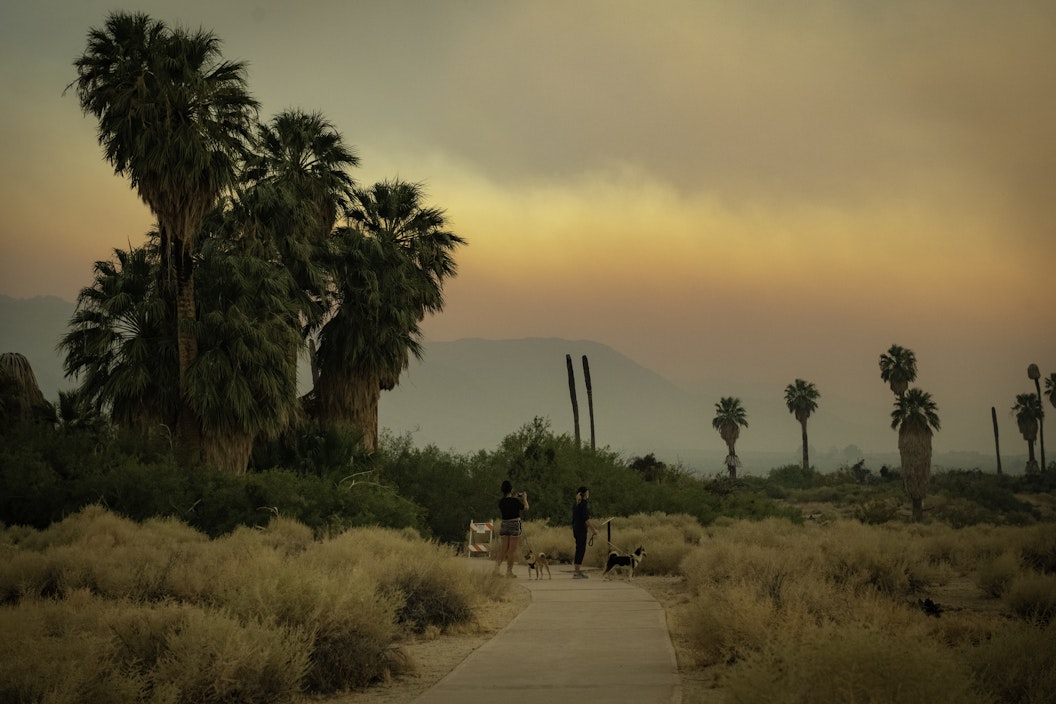 ProgramReducing EnergyInvestments in renewable and alternative energy projects are critical to cutting emissions, decreasing energy use, and improving reliability of energy infrastructure. NPF supports projects such as installing solar panels, investing in electric vehicles, and more.
ProgramReducing EnergyInvestments in renewable and alternative energy projects are critical to cutting emissions, decreasing energy use, and improving reliability of energy infrastructure. NPF supports projects such as installing solar panels, investing in electric vehicles, and more.
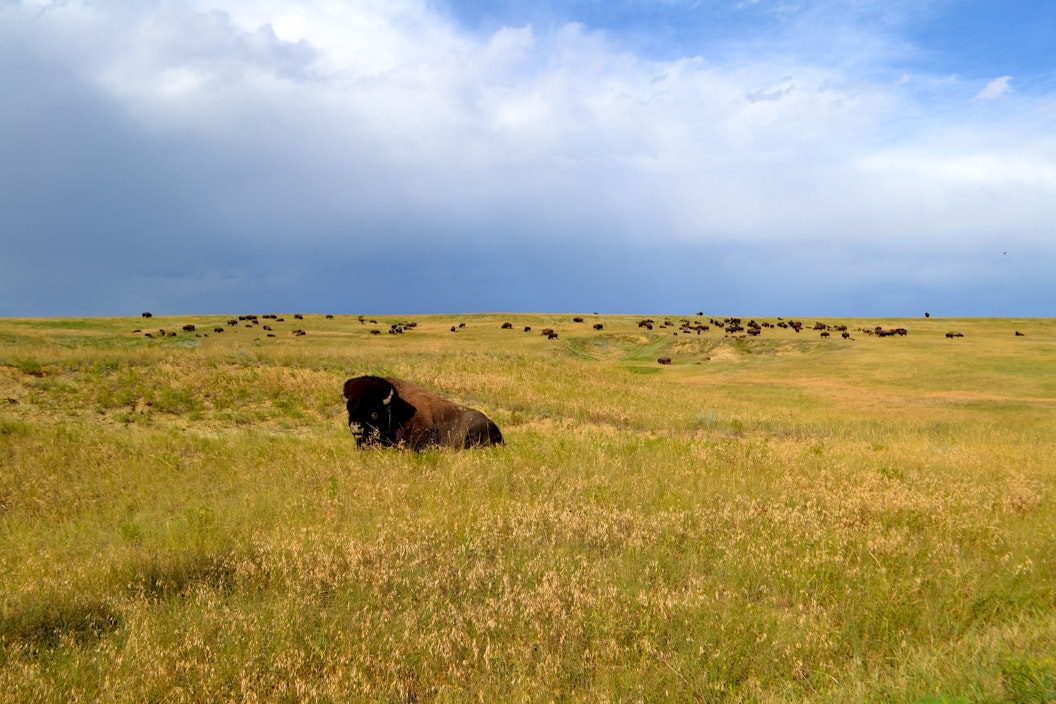
-
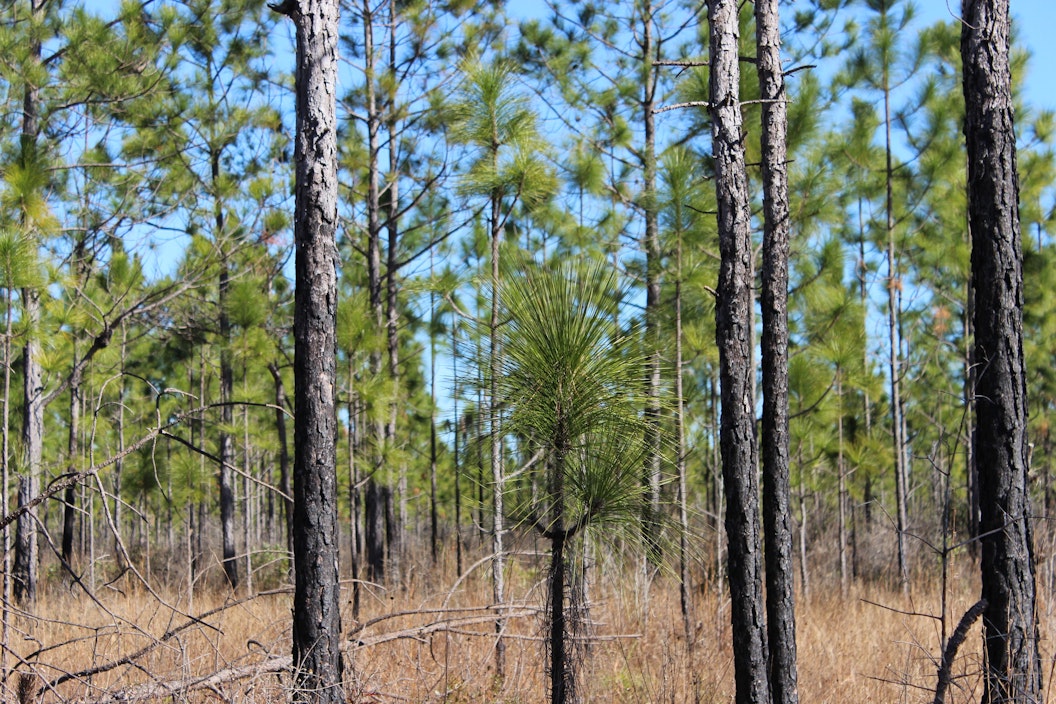 ProgramHabitat ConservationClimate change, invasive species, habitat degradation, and ecosystem fragmentation are putting national park landscapes at risk. NPF’s Habitat Conservation program supports high priority ecosystem restoration, resiliency, and research projects to help ensure the biodiverse ecosystems in our parks remain vibrant.
ProgramHabitat ConservationClimate change, invasive species, habitat degradation, and ecosystem fragmentation are putting national park landscapes at risk. NPF’s Habitat Conservation program supports high priority ecosystem restoration, resiliency, and research projects to help ensure the biodiverse ecosystems in our parks remain vibrant. -
 ProgramWildlifeTo stay resilient in the face of climate change and other threats to ecosystems, parks must carefully monitor wildlife and their habitats. NPF supports priority natural resource projects to help study and protect native species in a changing climate.
ProgramWildlifeTo stay resilient in the face of climate change and other threats to ecosystems, parks must carefully monitor wildlife and their habitats. NPF supports priority natural resource projects to help study and protect native species in a changing climate. -
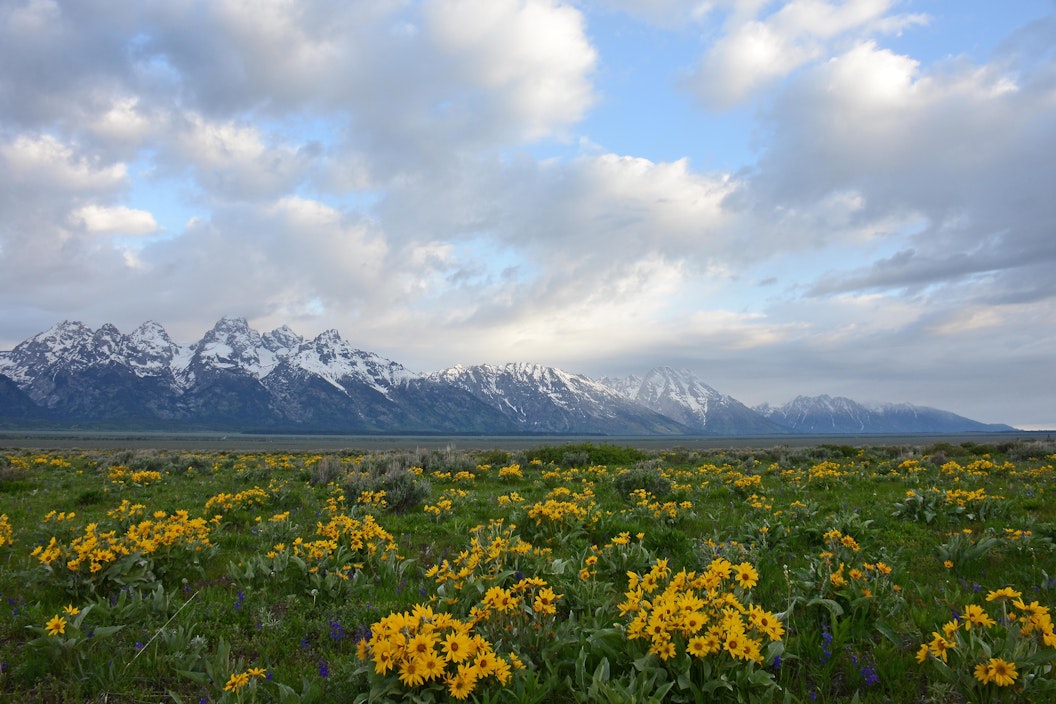 ProgramLand ConservationNPF’s Land Conservation Program conserves lands in and around national parks, which can protect biodiversity and replace lost habitat. In addition, land conservation creates climate buffers around our most important landscapes and historical landmarks, while promoting more climate-equitable communities with equal access to recreation and nature.
ProgramLand ConservationNPF’s Land Conservation Program conserves lands in and around national parks, which can protect biodiversity and replace lost habitat. In addition, land conservation creates climate buffers around our most important landscapes and historical landmarks, while promoting more climate-equitable communities with equal access to recreation and nature.
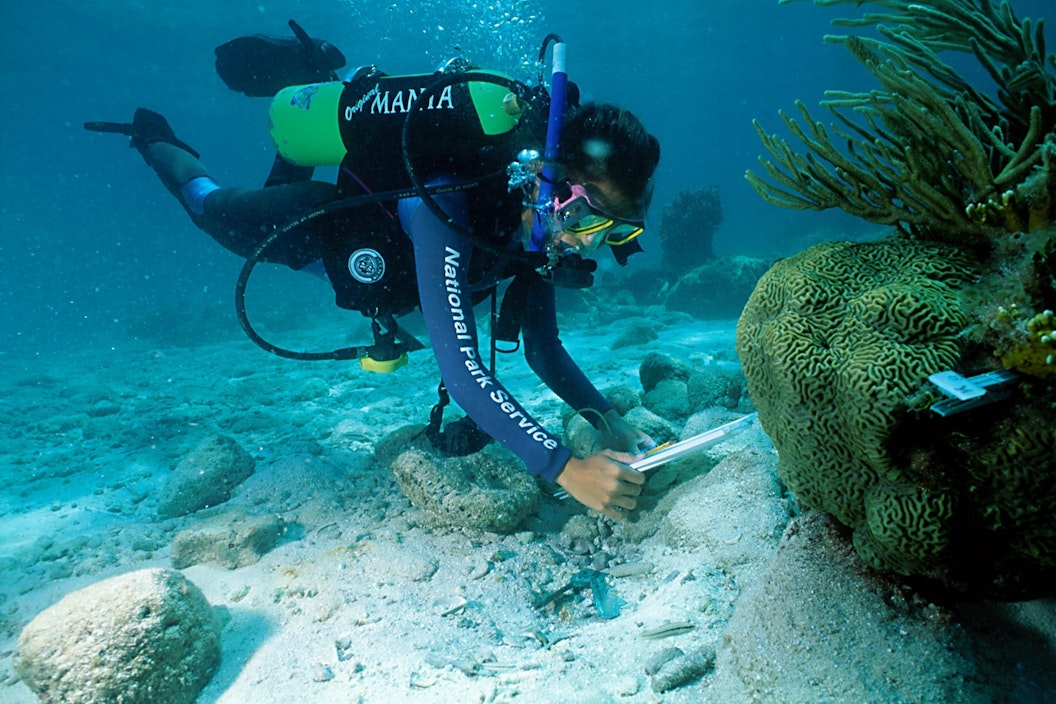
-
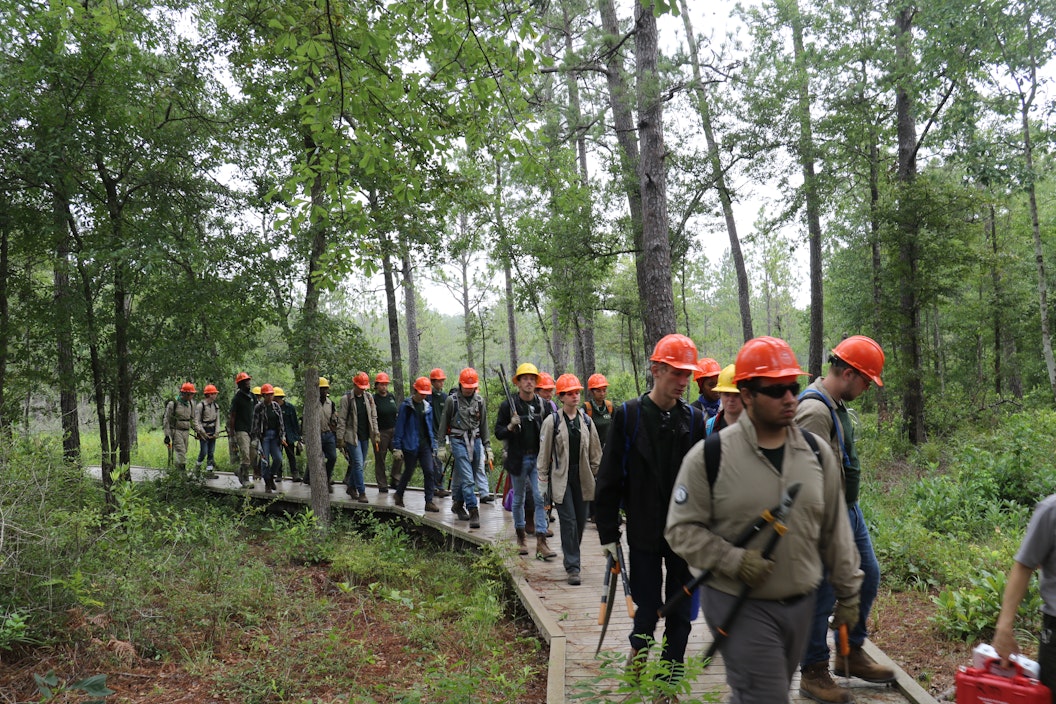 ProgramService CorpsNPF works with national parks and other partner organizations to engage diverse youth and young adults to serve in teams on service corps crews, tackling top-priority projects such as the removal of invasive species, wildfire fuel management, and mitigation and resiliency, with some projects focused specifically on combatting climate change.
ProgramService CorpsNPF works with national parks and other partner organizations to engage diverse youth and young adults to serve in teams on service corps crews, tackling top-priority projects such as the removal of invasive species, wildfire fuel management, and mitigation and resiliency, with some projects focused specifically on combatting climate change. -
 ProgramField ScienceNPF’s Field Science program encourages teachers to use parks as science classrooms to enhance student’s understanding of scientific concepts, including the effects of climate change.
ProgramField ScienceNPF’s Field Science program encourages teachers to use parks as science classrooms to enhance student’s understanding of scientific concepts, including the effects of climate change. -
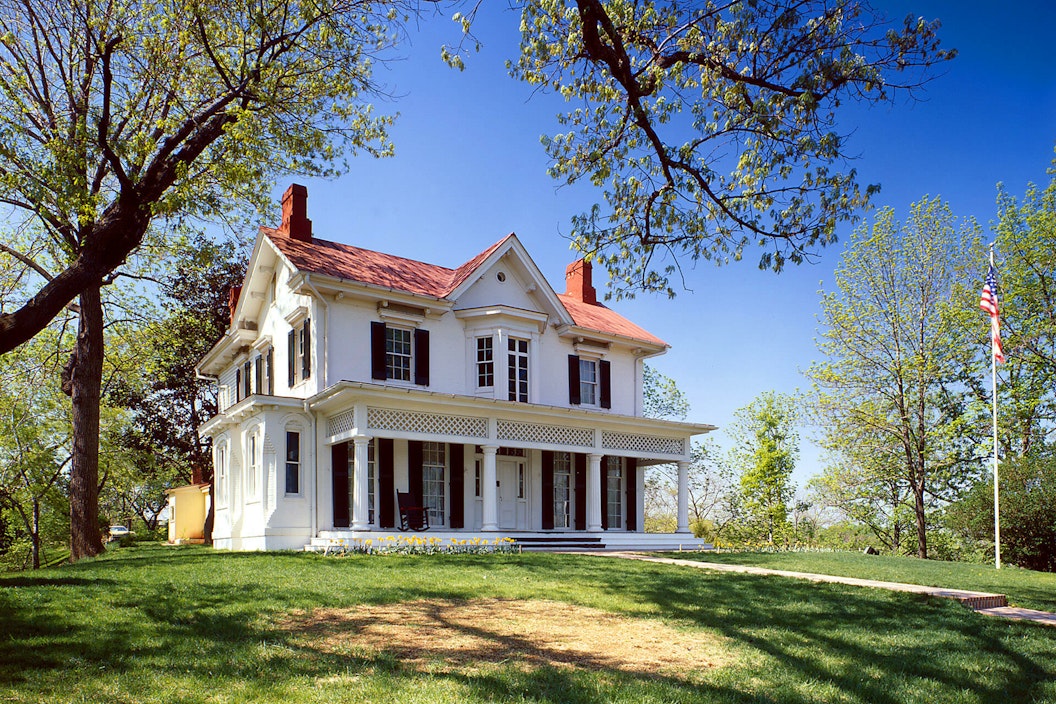 Area of WorkHistory and CultureNPF’s History and Culture programs are working to mitigate impacts of increasingly severe weather events and shifting landscapes on historic buildings, monuments, cultural resources, and the supporting communities who have been directly impacted and thus require new strategies for preservation and management.
Area of WorkHistory and CultureNPF’s History and Culture programs are working to mitigate impacts of increasingly severe weather events and shifting landscapes on historic buildings, monuments, cultural resources, and the supporting communities who have been directly impacted and thus require new strategies for preservation and management.
Recent Projects
Explore just some of the projects supported by NPF that help preserve and rise to the challenge of a changing climate.
-
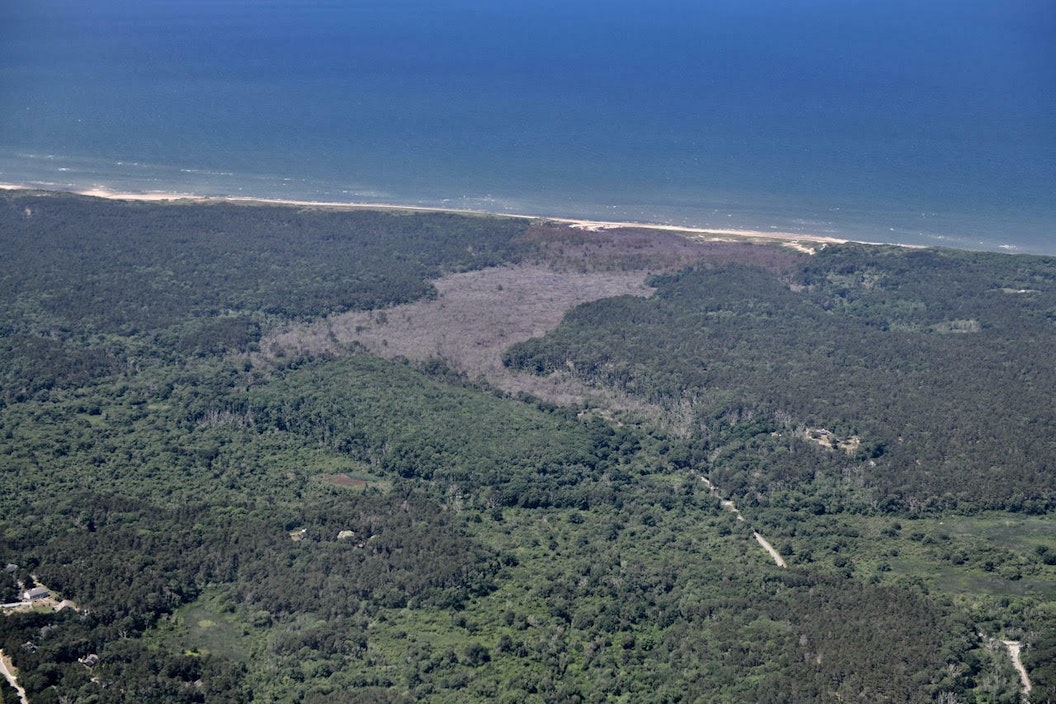 Cape Cod National SeashoreRestoring Coastal WetlandsNPF is supporting a large-scale wetland restoration project at Cape Cod National Seashore to restore the Herring River’s tidal flow, natural habitat, and ecosystem functions across 1,100 acres of coastal wetlands in and beyond park boundaries. In addition to benefiting wildlife, water quality, and nearby communities, wetland restoration projects like this serve as a powerful nature-based solution to climate change, given their ability to sequester and store large amounts of carbon.
Cape Cod National SeashoreRestoring Coastal WetlandsNPF is supporting a large-scale wetland restoration project at Cape Cod National Seashore to restore the Herring River’s tidal flow, natural habitat, and ecosystem functions across 1,100 acres of coastal wetlands in and beyond park boundaries. In addition to benefiting wildlife, water quality, and nearby communities, wetland restoration projects like this serve as a powerful nature-based solution to climate change, given their ability to sequester and store large amounts of carbon. -
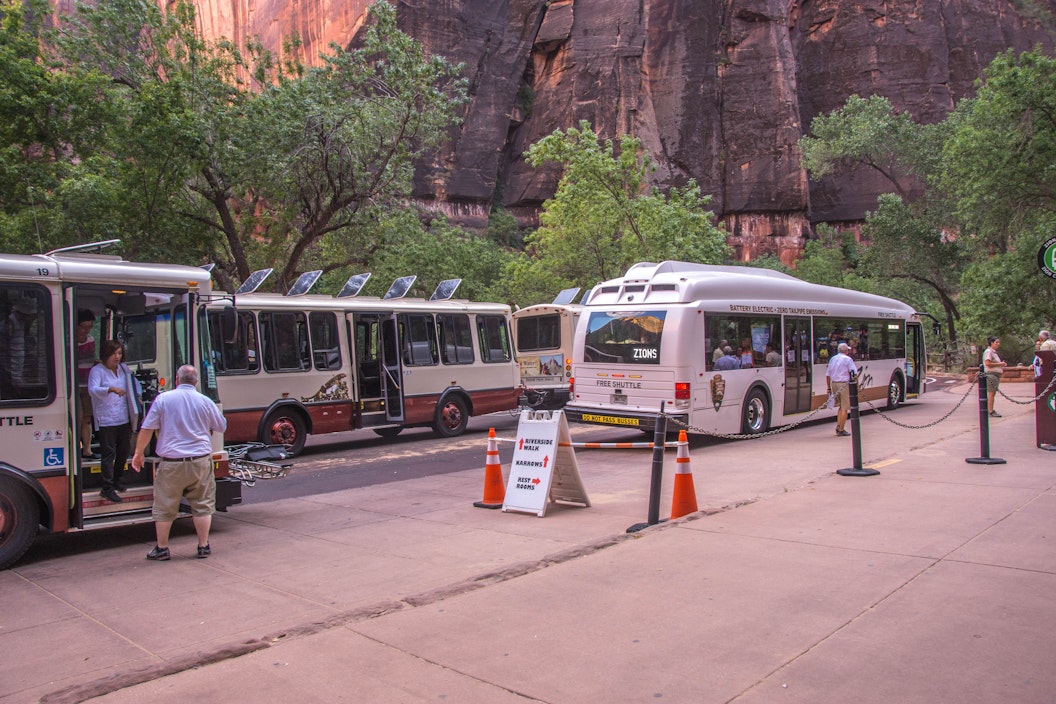 Zion National ParkSupporting Electric BusesA grant from NPF helped Zion National Park fund the replacement of its entire shuttle bus fleet with new battery-electric buses, advancing the park’s sustainability efforts. Such energy conservation and renewable energy projects are helping parks accelerate climate change mitigation and reduce their carbon footprint.
Zion National ParkSupporting Electric BusesA grant from NPF helped Zion National Park fund the replacement of its entire shuttle bus fleet with new battery-electric buses, advancing the park’s sustainability efforts. Such energy conservation and renewable energy projects are helping parks accelerate climate change mitigation and reduce their carbon footprint.
-
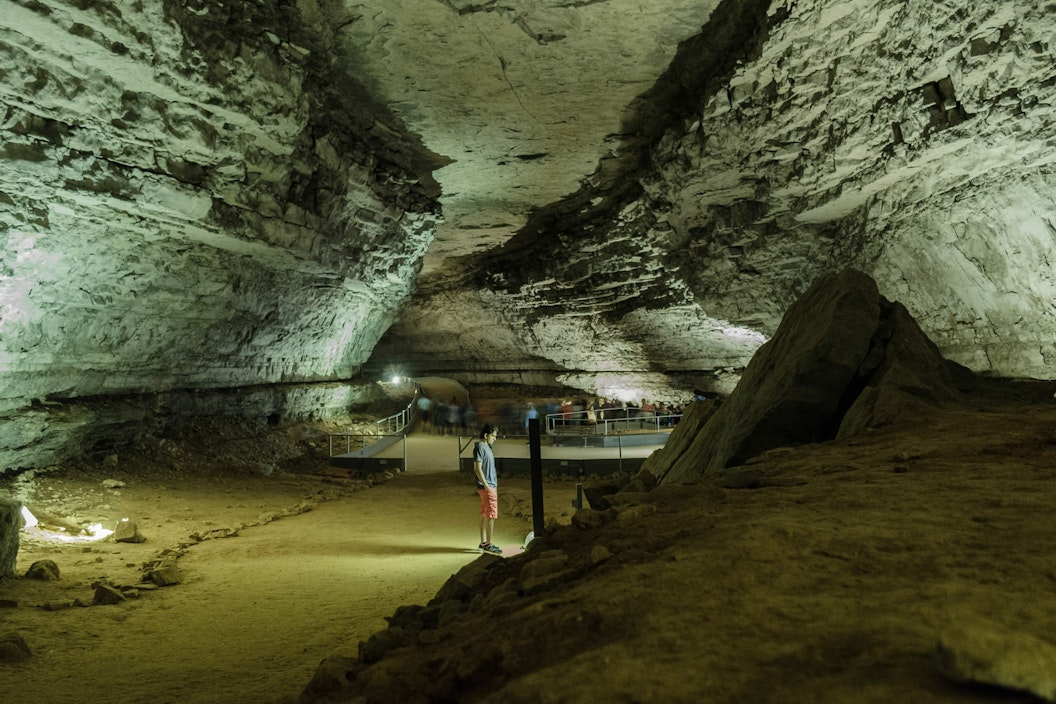 Mammoth Cave National ParkHelping Parks Reduce WasteNPF funded the purchase of a new forklift for Mammoth Cave National Park’s recycling program, aiding in the diversion of thousands of pounds of recyclable materials from local landfills. This initiative supports the protection of both the park’s aboveground and subsurface ecosystems, contributing to the maintenance of their delicate balance.
Mammoth Cave National ParkHelping Parks Reduce WasteNPF funded the purchase of a new forklift for Mammoth Cave National Park’s recycling program, aiding in the diversion of thousands of pounds of recyclable materials from local landfills. This initiative supports the protection of both the park’s aboveground and subsurface ecosystems, contributing to the maintenance of their delicate balance. -
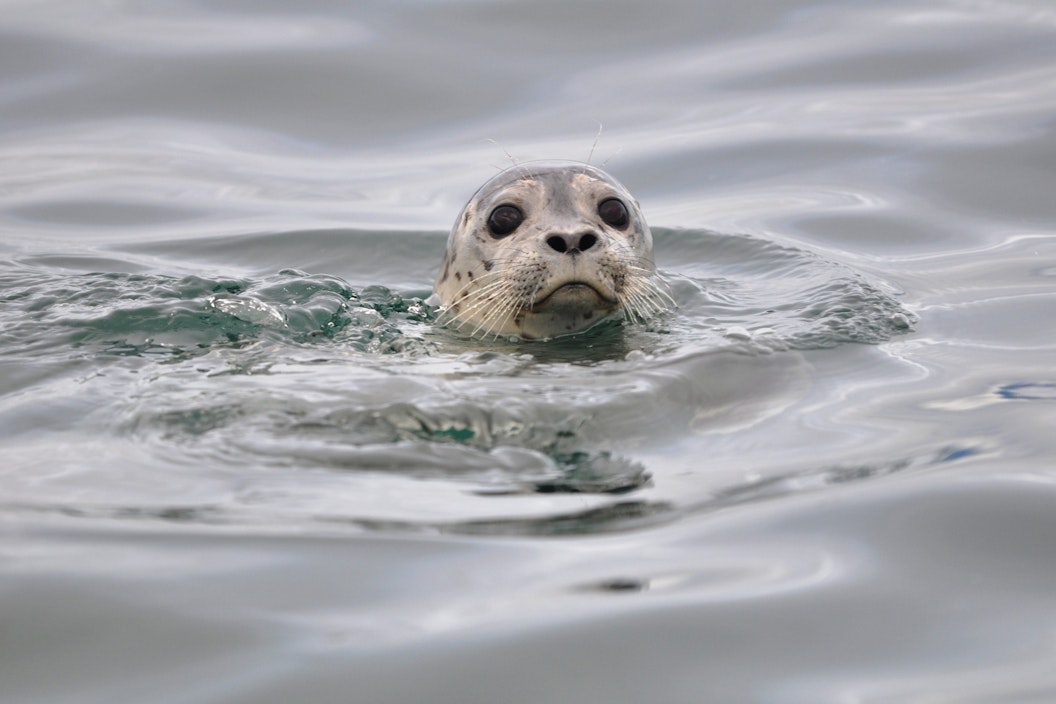 Kenai Fjords National ParkQuantifying Seasonal Glacial Ice Used by Harbor SealsThanks to NPF, scientists at Kenai Fjords National Park will explore the interactions between harbor seals and their fjord environments, a unique habitat that is rapidly changing due to climate change.
Kenai Fjords National ParkQuantifying Seasonal Glacial Ice Used by Harbor SealsThanks to NPF, scientists at Kenai Fjords National Park will explore the interactions between harbor seals and their fjord environments, a unique habitat that is rapidly changing due to climate change. -
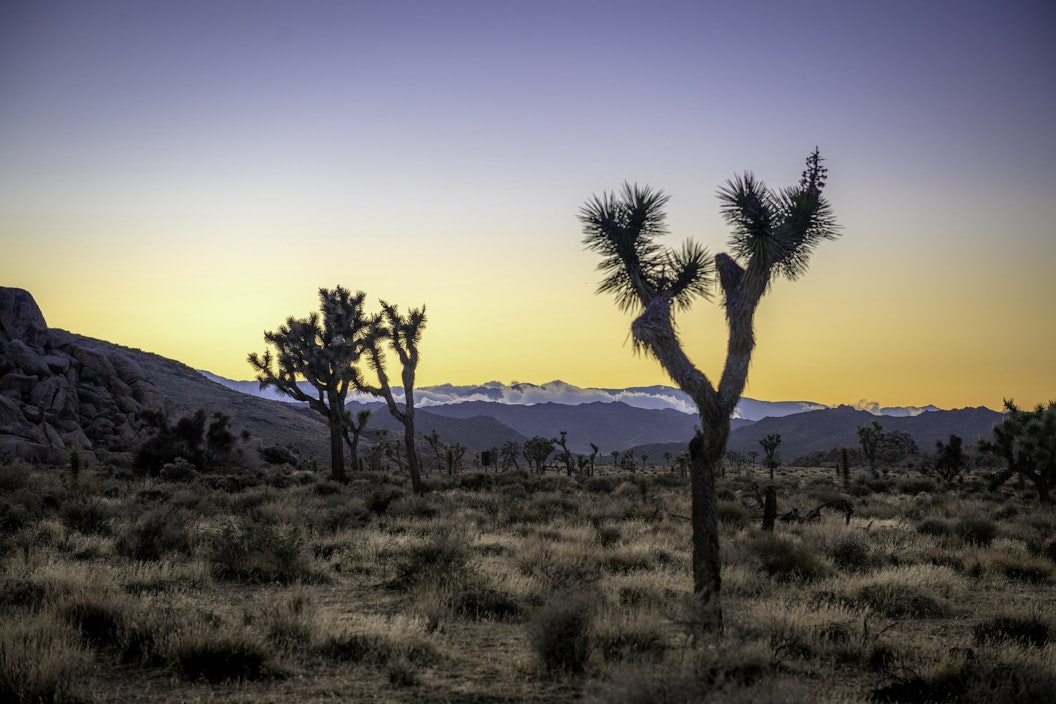 Joshua Tree National ParkAdvancing Park Sustainability and AccessibilityA grant from NPF enabled Joshua Tree National Park to buy an electric vehicle and install a new charging port for the car to help reduce emissions at the park. Already, the car has enabled a 40% reduction in greenhouse gas emissions and a 70% reduction in energy usage compared with a gas-fueled car.
Joshua Tree National ParkAdvancing Park Sustainability and AccessibilityA grant from NPF enabled Joshua Tree National Park to buy an electric vehicle and install a new charging port for the car to help reduce emissions at the park. Already, the car has enabled a 40% reduction in greenhouse gas emissions and a 70% reduction in energy usage compared with a gas-fueled car.
-
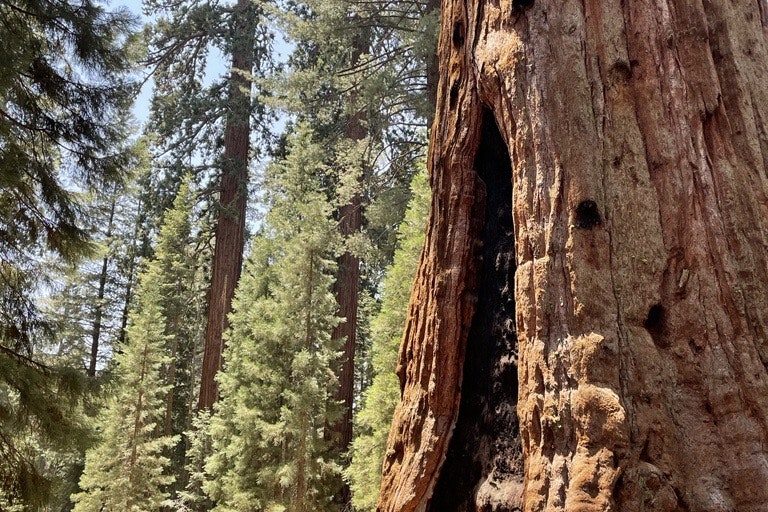 Yosemite National Park; Sequoia & Kings Canyon National ParksProtecting Giant SequoiasIn recent years, up to 20% of the iconic large giant sequoias – the largest trees in the world – have experienced mortality due to climate-exacerbated high-severity wildfires, droughts, and attacks from bark beetles. A multi-year NPF grant is supporting the Giant Sequoia Adaptive Management Working Group, which includes scientists and managers who are collaboratively working on a landscape-scale management plan to ensure these unique trees can survive for generations to come.
Yosemite National Park; Sequoia & Kings Canyon National ParksProtecting Giant SequoiasIn recent years, up to 20% of the iconic large giant sequoias – the largest trees in the world – have experienced mortality due to climate-exacerbated high-severity wildfires, droughts, and attacks from bark beetles. A multi-year NPF grant is supporting the Giant Sequoia Adaptive Management Working Group, which includes scientists and managers who are collaboratively working on a landscape-scale management plan to ensure these unique trees can survive for generations to come. -
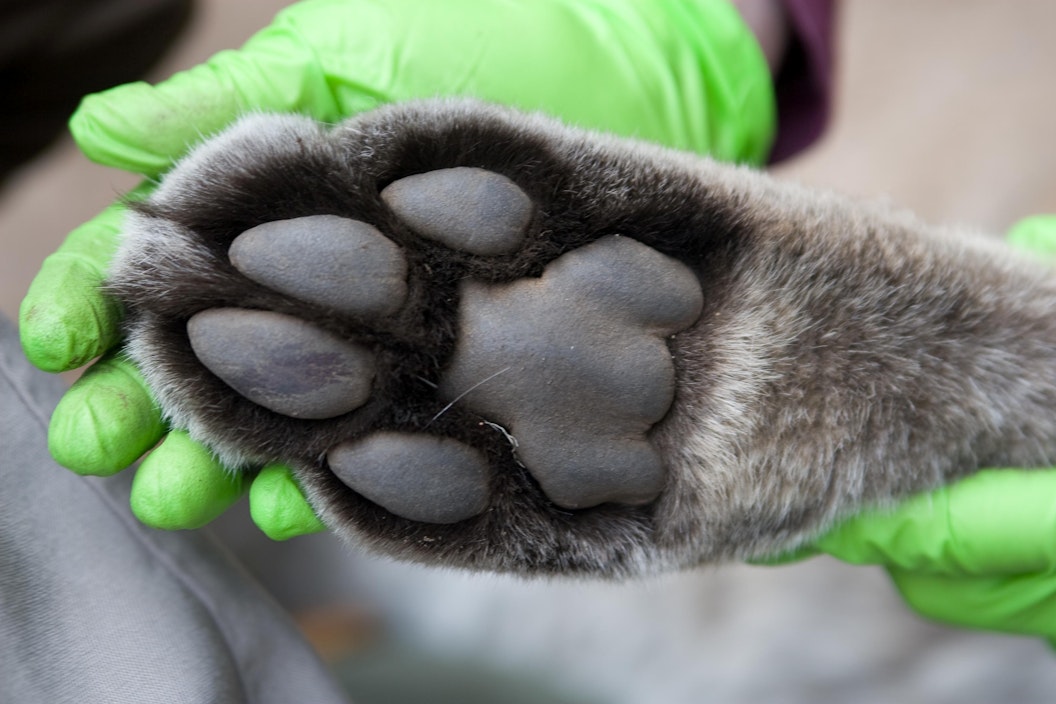 Santa Monica Mountains National Recreation AreaStudying Mountain Lions' Response to WildfiresNPF funded a study on the resiliency of mountain lions to wildfire in Santa Monica Mountains National Recreation Area. Due to climate change and an increase in human fire ignitions, wildfires are becoming more frequent and intense, which is detrimental to the park's habitat and species, including mountain lions. The study mapped the vegetation structures impacted by the wildfires and the effect that degradation of habitat had on mountain lion populations. The scientists discovered that large wildfires can cause mountain lions to more often take deadly risks in order to survive and reproduce.
Santa Monica Mountains National Recreation AreaStudying Mountain Lions' Response to WildfiresNPF funded a study on the resiliency of mountain lions to wildfire in Santa Monica Mountains National Recreation Area. Due to climate change and an increase in human fire ignitions, wildfires are becoming more frequent and intense, which is detrimental to the park's habitat and species, including mountain lions. The study mapped the vegetation structures impacted by the wildfires and the effect that degradation of habitat had on mountain lion populations. The scientists discovered that large wildfires can cause mountain lions to more often take deadly risks in order to survive and reproduce.
-
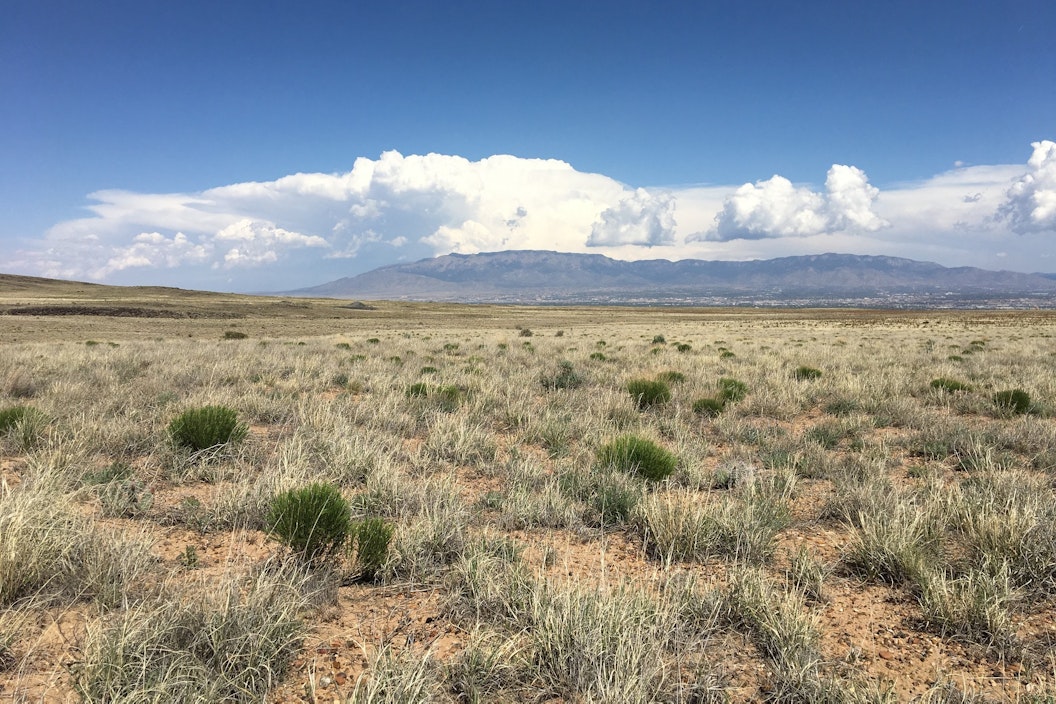 Petroglyph National MonumentHydration Stations at PetroglyphThanks to funding from NPF partner Hydro Flask, Petroglyph National Monument installed water refill stations on the patio of the Visitor Center and the restroom of Boca Negra Canyon. These stations will enhance the visitor experience and reduce plastic waste in the park.
Petroglyph National MonumentHydration Stations at PetroglyphThanks to funding from NPF partner Hydro Flask, Petroglyph National Monument installed water refill stations on the patio of the Visitor Center and the restroom of Boca Negra Canyon. These stations will enhance the visitor experience and reduce plastic waste in the park. -
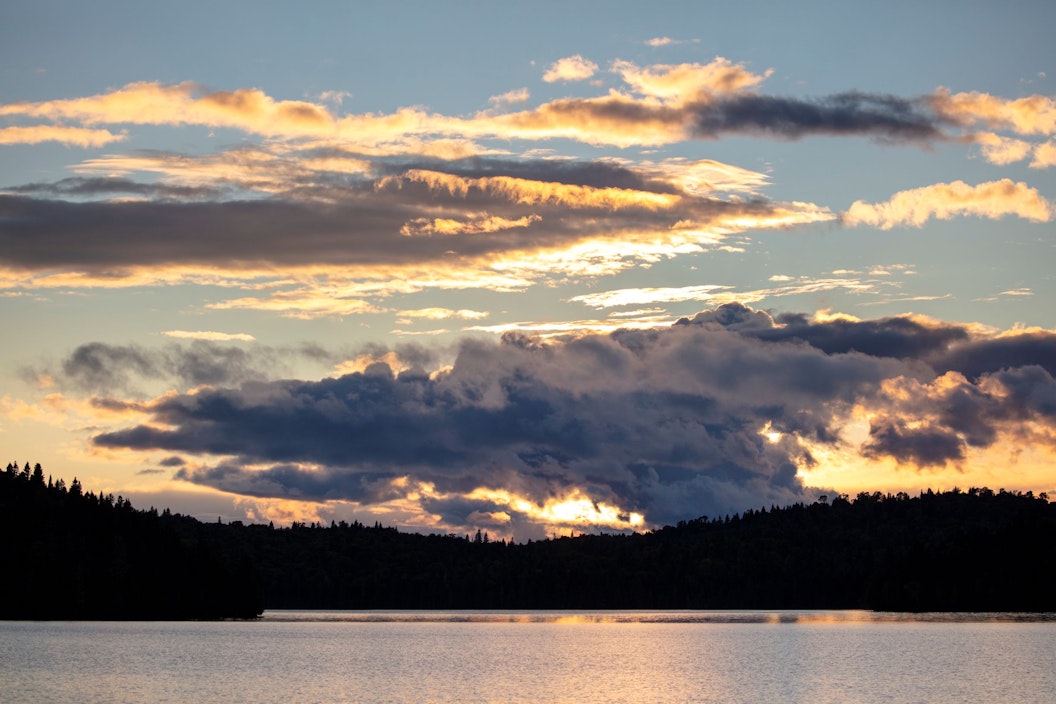 National Parks of Lake SuperiorSupporting Decarbonization of Lake Superior UnitsA 2022 NPF Strong Parks, Strong Communities grant to National Parks of Lake Superior Foundation will help the organization boost capacity, including bringing on a support staff and grant writer, all part of an the effort to develop a plan to fully decarbonize all five NPS units on Lake Superior.
National Parks of Lake SuperiorSupporting Decarbonization of Lake Superior UnitsA 2022 NPF Strong Parks, Strong Communities grant to National Parks of Lake Superior Foundation will help the organization boost capacity, including bringing on a support staff and grant writer, all part of an the effort to develop a plan to fully decarbonize all five NPS units on Lake Superior. -
 Big Bend National ParkPowering Panther JunctionNPF granted funds to Big Bend Conservancy to support the installation of a solar array and shade structures covering parking areas at the Panther Junction Visitor Center at Big Bend National Park in Texas. The installation will be the park’s pilot solar program and will provide 100% of the energy needs of the visitor center and reduce costs for years to come.
Big Bend National ParkPowering Panther JunctionNPF granted funds to Big Bend Conservancy to support the installation of a solar array and shade structures covering parking areas at the Panther Junction Visitor Center at Big Bend National Park in Texas. The installation will be the park’s pilot solar program and will provide 100% of the energy needs of the visitor center and reduce costs for years to come.
-
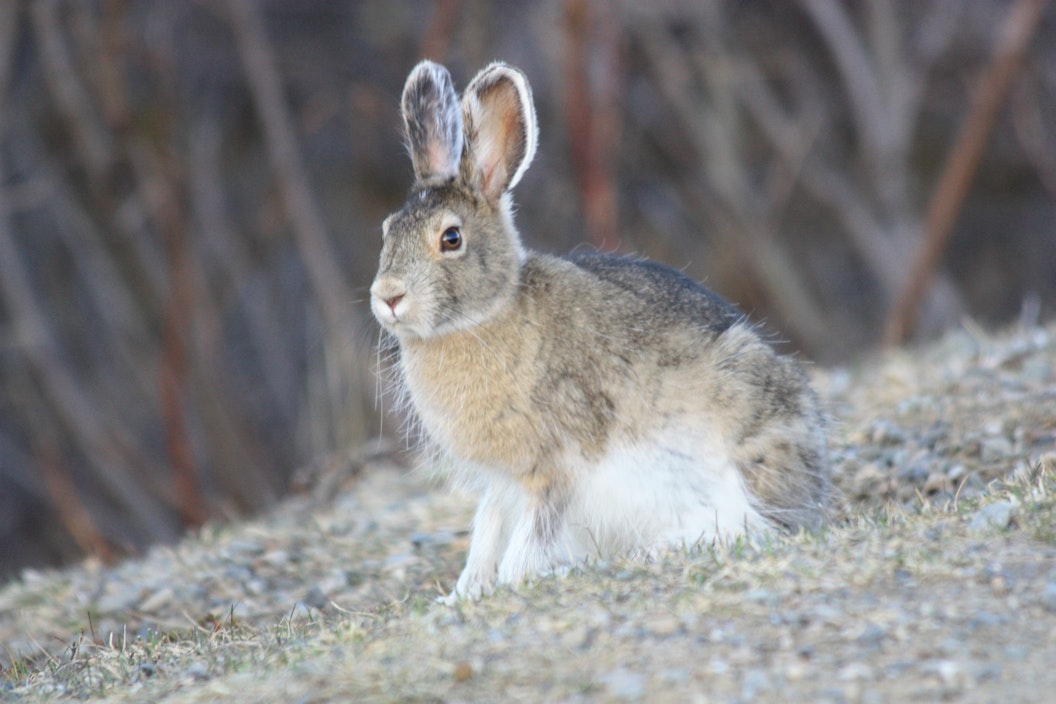 Isle Royale national ParkStudying Camouflage Mismatch of Snowshoe HaresIsle Royale National Park is home to the longest predator-prey study on record. Snowshoe hares are a key piece of the island’s food web, which has experienced shifting dynamics and hares are particularly vulnerable to climate change because of a camouflage mismatch as snow seasons shorten. With the help of NPF funding, NPS and the University of Wisconsin-Madison are collecting data and analyzing various factors to help better understand the viability of snowshoe hare populations in the long term.
Isle Royale national ParkStudying Camouflage Mismatch of Snowshoe HaresIsle Royale National Park is home to the longest predator-prey study on record. Snowshoe hares are a key piece of the island’s food web, which has experienced shifting dynamics and hares are particularly vulnerable to climate change because of a camouflage mismatch as snow seasons shorten. With the help of NPF funding, NPS and the University of Wisconsin-Madison are collecting data and analyzing various factors to help better understand the viability of snowshoe hare populations in the long term. -
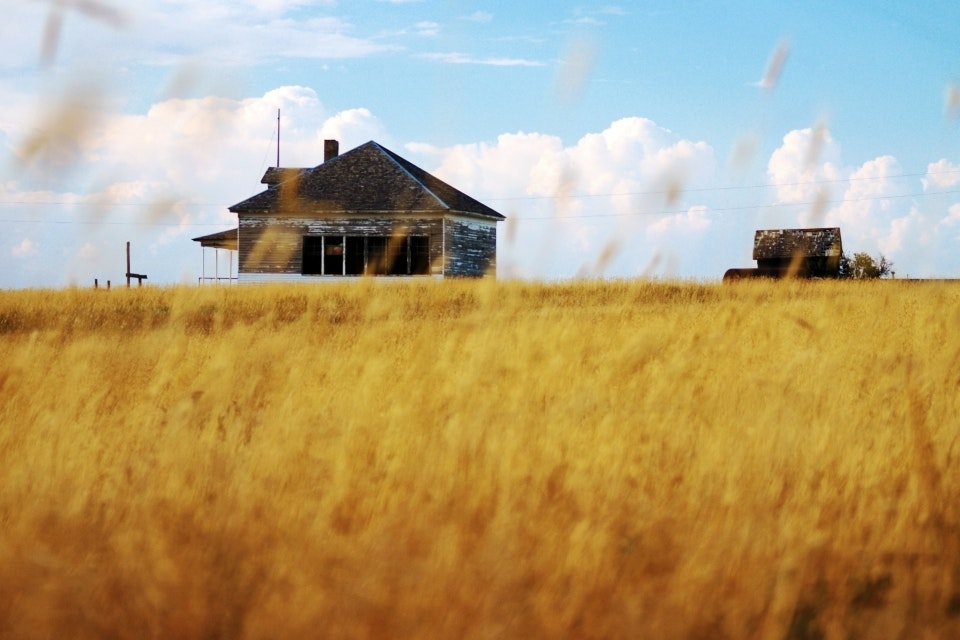 Nicodemus National Historical ParkProtecting Park CommunitiesA recent NPF grant enabled The Trust for Public Land to successfully purchase and donate a parcel of land within the Township of Nicodemus, Kansas to NPS that will serve as the location of Nicodemus National Historical Park's permanent visitor’s center and a tornado shelter for the residents of the town. As extreme weather events increase in frequency and severity, national park sites that preserve living history also shelter current communities from the storm.
Nicodemus National Historical ParkProtecting Park CommunitiesA recent NPF grant enabled The Trust for Public Land to successfully purchase and donate a parcel of land within the Township of Nicodemus, Kansas to NPS that will serve as the location of Nicodemus National Historical Park's permanent visitor’s center and a tornado shelter for the residents of the town. As extreme weather events increase in frequency and severity, national park sites that preserve living history also shelter current communities from the storm. -
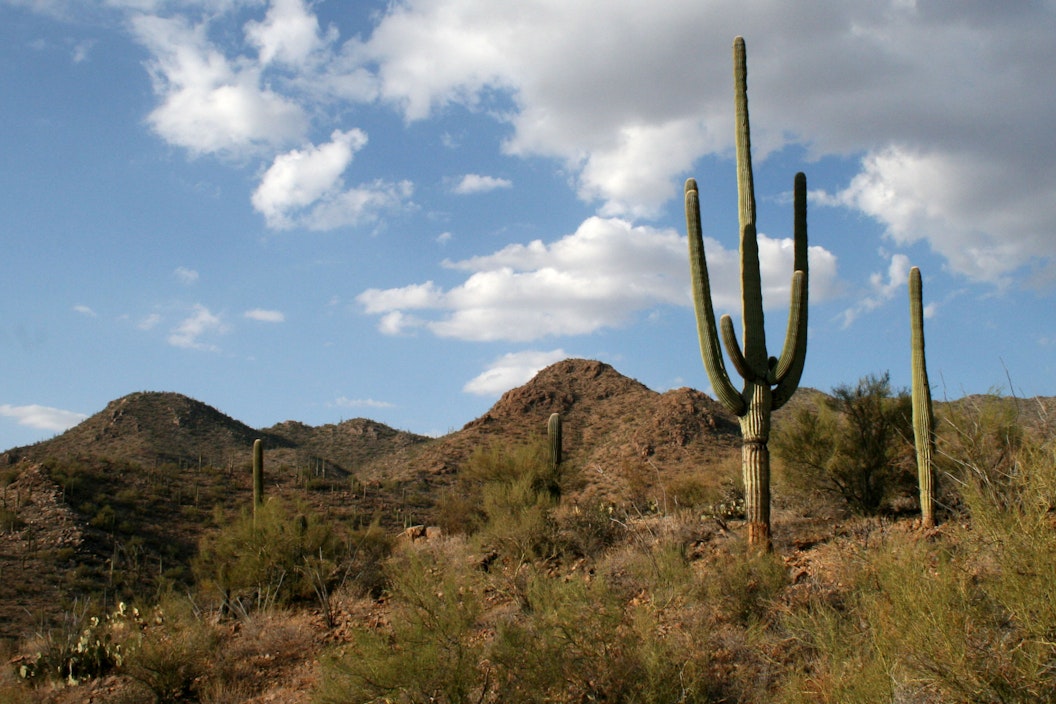 Saguaro National ParkProtecting Habitat for a Rare Desert FrogAt Saguaro National Park, the lowland leopard frog is a desert-adapted amphibian that is increasingly at risk because of climate change and habitat loss. A three-year NPF funded restoration project engages local community and school group volunteers to remove fountain grass, which strains already limited water sources, and restore more climate-resilient native habitat for this rare desert frog. Once optimal habitat conditions return, the park will reintroduce leopard frogs back into three major canyon streams.
Saguaro National ParkProtecting Habitat for a Rare Desert FrogAt Saguaro National Park, the lowland leopard frog is a desert-adapted amphibian that is increasingly at risk because of climate change and habitat loss. A three-year NPF funded restoration project engages local community and school group volunteers to remove fountain grass, which strains already limited water sources, and restore more climate-resilient native habitat for this rare desert frog. Once optimal habitat conditions return, the park will reintroduce leopard frogs back into three major canyon streams.
Related Stories
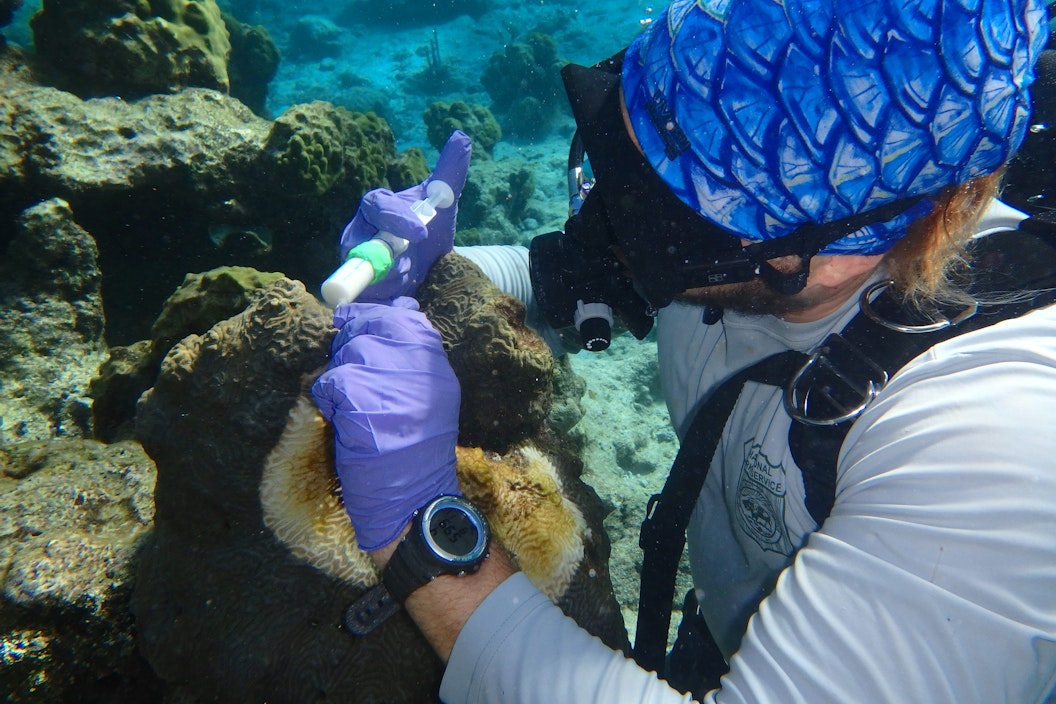
-
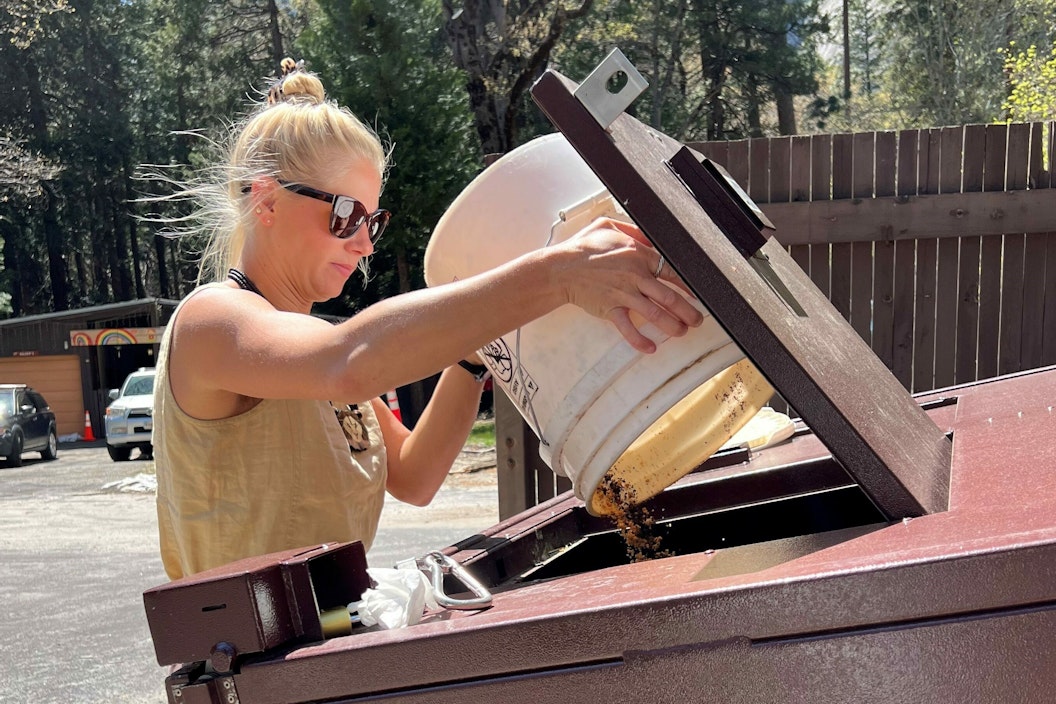 StoryWaste Not, Want NotPart of the Subaru-funded Don’t Feed the Landfills Initiative, Yosemite National Park’s composting and fuel cylinder diversion and recycling programs have grown tremendously. Meet the person leading the charge.
StoryWaste Not, Want NotPart of the Subaru-funded Don’t Feed the Landfills Initiative, Yosemite National Park’s composting and fuel cylinder diversion and recycling programs have grown tremendously. Meet the person leading the charge. -
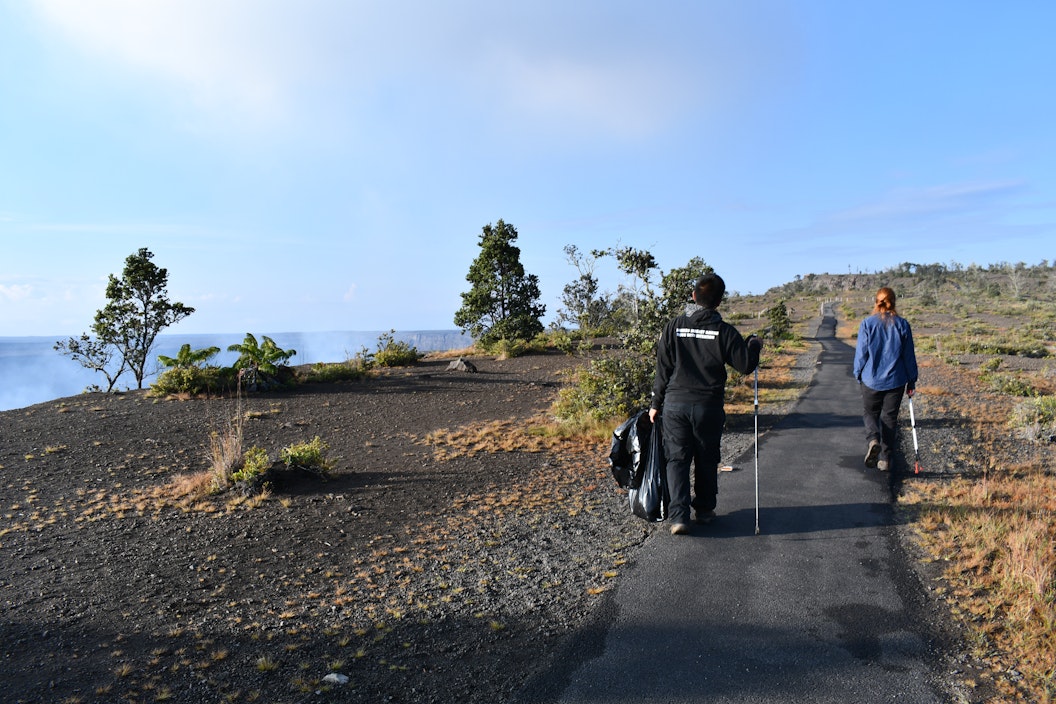 VideoCleaning Up Hawaii VolcanoesThroughout the summer of 2022, the Guardians of the Trails Youth Intern Program removed invasive plant species from Hawaii Volcanoes National Park to protect native species and restore habitats. This project was made possible through REI Co-op's support of NPF’s Service Corps program.
VideoCleaning Up Hawaii VolcanoesThroughout the summer of 2022, the Guardians of the Trails Youth Intern Program removed invasive plant species from Hawaii Volcanoes National Park to protect native species and restore habitats. This project was made possible through REI Co-op's support of NPF’s Service Corps program.
-
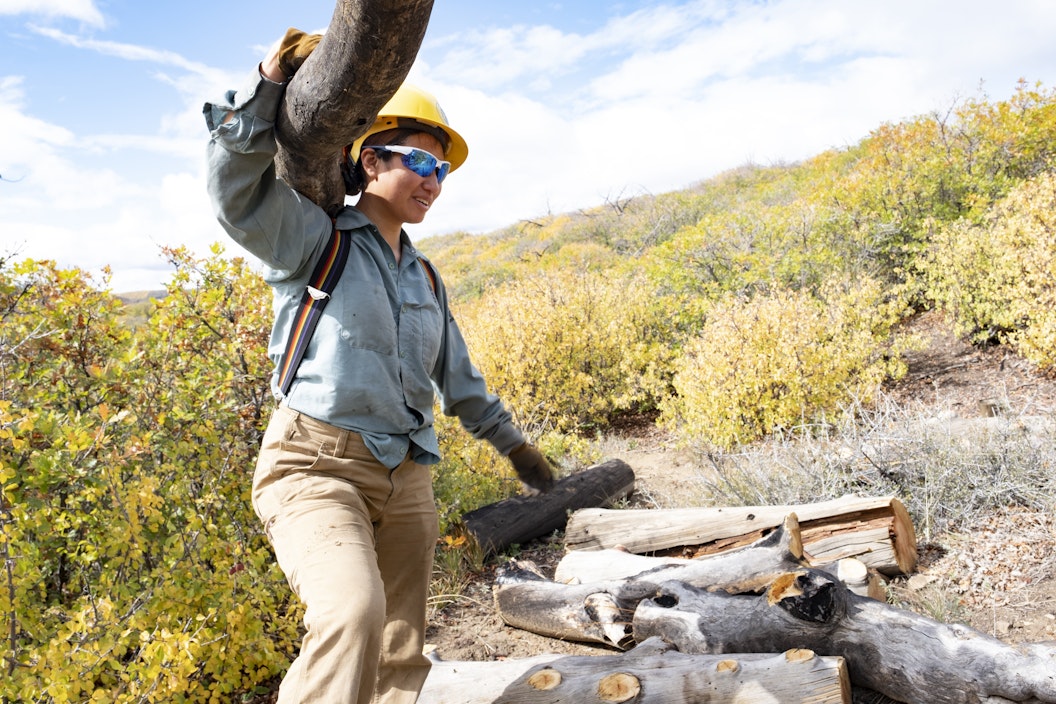 VideoInvesting in Service Corps ProjectsIn spring 2022, NPF was invited to participate in discussions about the role of parks in climate resiliency and environmental stewardship during the Aspen Ideas Climate event. As part of this, NPF announced a $4.1 million investment in service corps programs across the country, with many projects helping parks respond to the challenges of a changing climate.
VideoInvesting in Service Corps ProjectsIn spring 2022, NPF was invited to participate in discussions about the role of parks in climate resiliency and environmental stewardship during the Aspen Ideas Climate event. As part of this, NPF announced a $4.1 million investment in service corps programs across the country, with many projects helping parks respond to the challenges of a changing climate. -
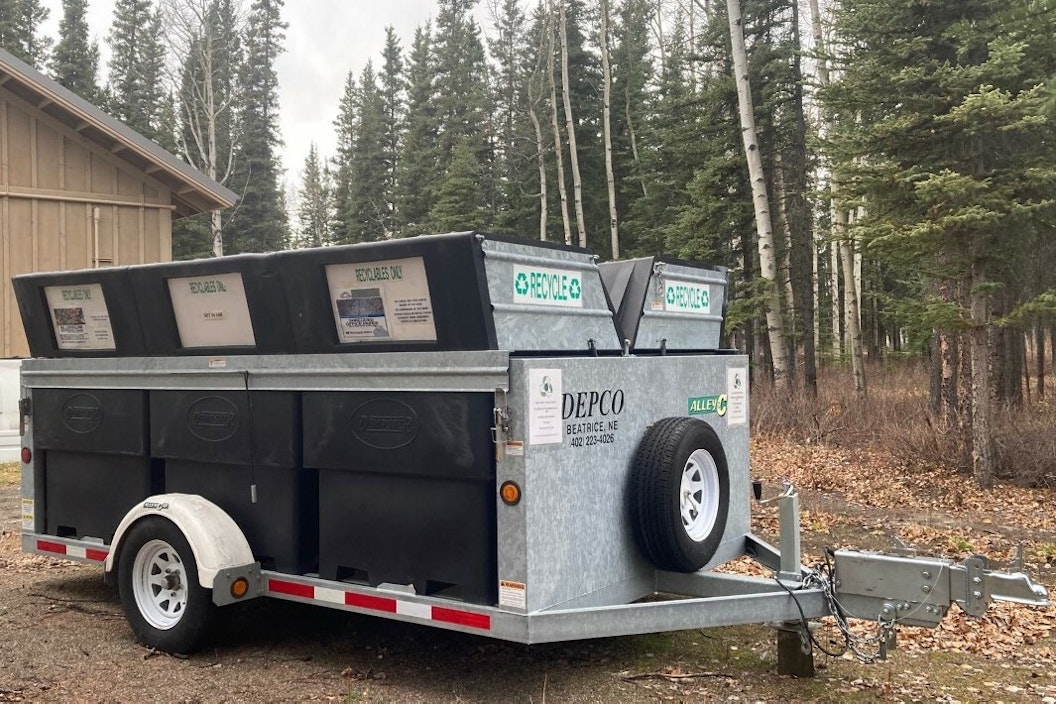 Program UpdateRecycling at Wrangell - St. EliasNPF partnered with Tupperware to fund the development and creation of an innovative and strategic new park-wide recycling plan at Alaska’s Wrangell-St. Elias National Park & Preserve in 2021, and the park continues to build on Tupperware’s investment as they execute the plan.
Program UpdateRecycling at Wrangell - St. EliasNPF partnered with Tupperware to fund the development and creation of an innovative and strategic new park-wide recycling plan at Alaska’s Wrangell-St. Elias National Park & Preserve in 2021, and the park continues to build on Tupperware’s investment as they execute the plan. -
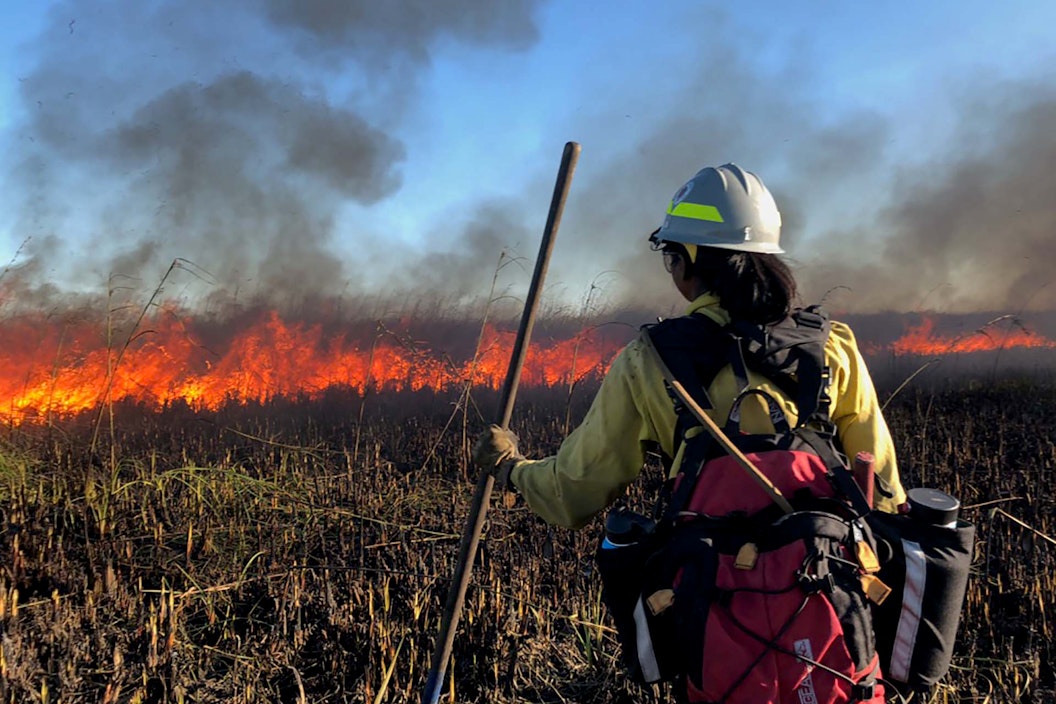 Program UpdateWomen of FireNational parks can face both structural fire and wildland fire within park boundaries. And while many women are interested in wildland fire management, less than 5% of fire management leadership positions are held by women at the park level. NPF, with support from REI Co-op, is helping NPS increase diversity within the ranks of the wildland fire workforce by funding new women’s fire corps crews.
Program UpdateWomen of FireNational parks can face both structural fire and wildland fire within park boundaries. And while many women are interested in wildland fire management, less than 5% of fire management leadership positions are held by women at the park level. NPF, with support from REI Co-op, is helping NPS increase diversity within the ranks of the wildland fire workforce by funding new women’s fire corps crews.
NPS Resources
-
 NPS ArticleUnderstand the ScienceIn all management efforts, NPS uses best-available science to inform their decision-making. Learn more about how NPS is thinking globally and acting locally.
NPS ArticleUnderstand the ScienceIn all management efforts, NPS uses best-available science to inform their decision-making. Learn more about how NPS is thinking globally and acting locally. -
 FAQsClimate QuestionsThere can be misunderstandings around the realities of climate change. Get answers to commonly asked climate questions.
FAQsClimate QuestionsThere can be misunderstandings around the realities of climate change. Get answers to commonly asked climate questions.
-
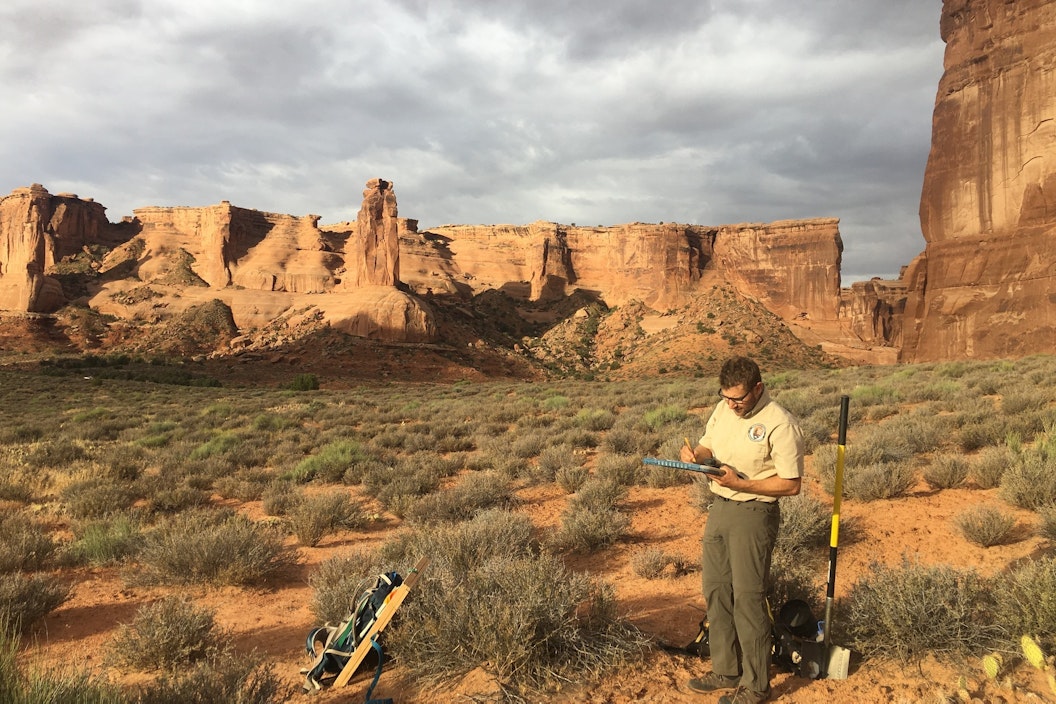 A Holistic ApproachNPS's StrategySuccessfully responding to climate change requires considering every facet of daily operations in parks. Explore NPS’s Climate Change Response Strategy.
A Holistic ApproachNPS's StrategySuccessfully responding to climate change requires considering every facet of daily operations in parks. Explore NPS’s Climate Change Response Strategy. -
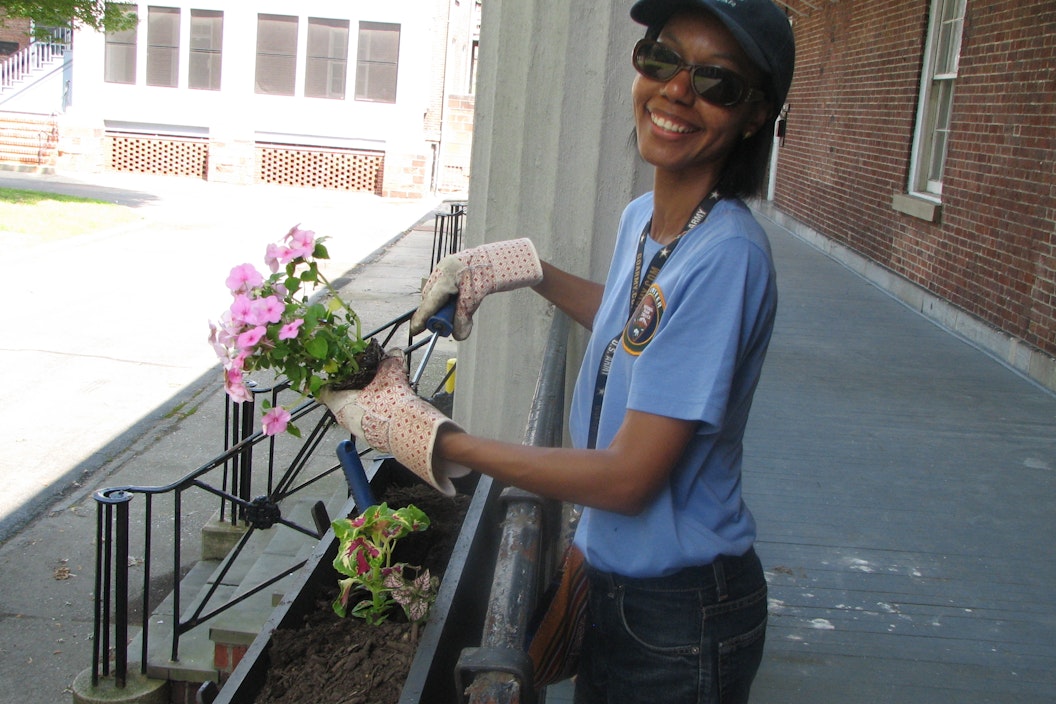 Take Positive ActionsMitigate the Cause at HomeThere are many actions we can take at home to lessen our greenhouse gas emissions, benefitting our parks as well as the people who enjoy them. Check out NPS's top tips.
Take Positive ActionsMitigate the Cause at HomeThere are many actions we can take at home to lessen our greenhouse gas emissions, benefitting our parks as well as the people who enjoy them. Check out NPS's top tips.
